News
20242023202220212020
The Department of Biochemistry and Biophysics announces that the NMR facility for structural biology has been decommissioned
Monday, December 18, 2023
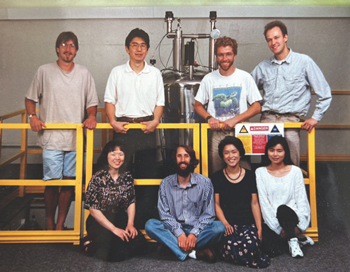
Shohei Koide (top, second from left) and his lab, along with NMR Center Director Scott Kennedy (Bottom, second from left), just after installation, 1996
The facility was originally installed in 1996 by Professor Shohei Koide with help from Scott Kennedy. The facility was key to Prof. Koide establishing a strong research program that included unique biophysical characterizations of proteins and valuable tools for targeted therapeutics. Over the years the experiments performed on the instrument have contributed to over 75 publications and ~22 structure entries in the Protein Data Bank with the involvement of dozens of primary investigators. Dr. Kennedy has maintained the instrumentation and collaborated with investigators and students since it was first opened, until the decommissioning. The facility contained a Varian Unity INOVA 600 MHz NMR spectrometer equipped with four RF channels, pulsed field gradients and triple resonance probes – state of the art features at the time. A 400 MHz NMR spectrometer (previously decommissioned) was also available in the facility as well as workstations and software for data analysis and structure calculation. The decision to discontinue the facility was influenced by an overall decline of interest in structural NMR, limited supplies and high cost of helium, a national trend toward centers, and retirement of Dr. Kennedy.
View more images from the NMR
O’Connell Comments on First FDA-Approved CRISPR-Based Therapy
Wednesday, December 13, 2023
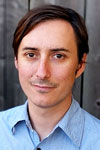 The FDA has just approved the use of CRISPR-based gene editing in the treatment of sickle-cell disease. Mitchell O’Connell, an assistant professor in the Department of Biochemistry and Biophysics, trained with Jennifer Doudna, who won the Nobel Prize for developing this technology. In a comment linked below, he discusses the approval and its implications for other treatments currently in development.
The FDA has just approved the use of CRISPR-based gene editing in the treatment of sickle-cell disease. Mitchell O’Connell, an assistant professor in the Department of Biochemistry and Biophysics, trained with Jennifer Doudna, who won the Nobel Prize for developing this technology. In a comment linked below, he discusses the approval and its implications for other treatments currently in development.
Read More: O’Connell Comments on First FDA-Approved CRISPR-Based TherapySayeeda Zain Fall travel award winners
Wednesday, December 13, 2023
We are pleased to announce the winners of the Sayeeda Zain Fall Travel awards: Gloria Asantewaa, Hannah Clary, Ashlin Poruthoor and Nick Rugelis.
The Sayeeda Zain Travel Award honors the distinguished career and charitable life of Dr. Sayeeda Zain. The award is given in the fall and spring semesters in recognition of research excellence to support travel and related expenses for attendance at a scientific conference or corporate internship to gain practical experience. The next round of Sayeeda Zain Travel Awards will be offered in Spring 2024.




Thank you to all those who applied and congratulations to Gloria, Hannah, Ashlin and Nick!
Elizabeth Abshire Awarded K99 Grant
Thursday, December 7, 2023
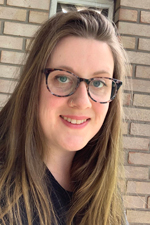 Elizabeth Abshire, a postdoctoral researcher in the laboratory of Lynne Maquat, has been awarded a K99 grant by the National Institutes of Health. Her proposal, entitled “Regulation of exon junction complex composition and assembly”, is directed toward study of the formation of a key determinant of RNA decay.
Elizabeth Abshire, a postdoctoral researcher in the laboratory of Lynne Maquat, has been awarded a K99 grant by the National Institutes of Health. Her proposal, entitled “Regulation of exon junction complex composition and assembly”, is directed toward study of the formation of a key determinant of RNA decay.
Congratulations to Elizabeth on this significant achievement!
Joshua Munger Receives Outstanding Graduate Program Director Award
Monday, December 4, 2023
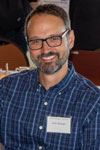 Professor Joshua Munger of the Department of Biochemistry and Biophysics has been honored with the Outstanding Graduate Program Director Award by the Office of Graduate Education and Postdoctoral Affairs of the School of Medicine and Dentistry. This award recognizes individuals who have made exceptional or unique contributions to a graduate program and to the graduate student experience within that program. It includes an award of $2500, designated as unrestricted education support funds in aid of the graduate program.
Professor Joshua Munger of the Department of Biochemistry and Biophysics has been honored with the Outstanding Graduate Program Director Award by the Office of Graduate Education and Postdoctoral Affairs of the School of Medicine and Dentistry. This award recognizes individuals who have made exceptional or unique contributions to a graduate program and to the graduate student experience within that program. It includes an award of $2500, designated as unrestricted education support funds in aid of the graduate program.
The Award was presented on October 30th, at the Graduate Education and Postdoctoral Affairs Awards and Philosophy Meeting. Congratulations to Josh on this important and well-deserved award!
Hannah Clary Receives Outstanding Poster Presentation Award
Thursday, November 23, 2023
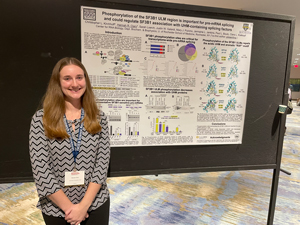 Hannah Clary, a student and T32 trainee in Clara Kielkopf’s group, was the recipient of a signal honor in November. She attended the inaugural FASEB conference on RNA Processing in Cancer: From Bench to Bedside. This meeting brings together cancer researchers, RNA scientists, clinicians and drug development companies to accelerate the transfer of fundamental advances into therapeutic use. The conference included invited talks, as well as a poster session. Hannah exhibited a poster entitled “Phosphorylation of the SF3B1 ULM region is important for pre-RNA splicing and could regulate SF3B1 association with UHM-containing splicing factors”. She was selected by a vote of the conferees to receive the Outstanding Presentation Award.
Hannah Clary, a student and T32 trainee in Clara Kielkopf’s group, was the recipient of a signal honor in November. She attended the inaugural FASEB conference on RNA Processing in Cancer: From Bench to Bedside. This meeting brings together cancer researchers, RNA scientists, clinicians and drug development companies to accelerate the transfer of fundamental advances into therapeutic use. The conference included invited talks, as well as a poster session. Hannah exhibited a poster entitled “Phosphorylation of the SF3B1 ULM region is important for pre-RNA splicing and could regulate SF3B1 association with UHM-containing splicing factors”. She was selected by a vote of the conferees to receive the Outstanding Presentation Award.
Congratulations to Hannah on this achievement!
Eric Phizicky Spotlighted by the RNA Society
Wednesday, November 8, 2023
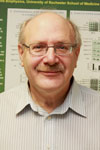 The RNA Society has posted a Spotlight article about Eric Phizicky, highlighting his research and his outstanding career at the University. In a comment on this well-deserved notice, Mitch OConnell tweeted [or possibly X'ed] the following: "Love this! Eric has been instrumental helping me stay afloat starting a lab at Rochester. Sitting down almost high school English teacher style going line by line, pen and paper through a grant application has been transformative about how I think to communicate. A true gift!"
The RNA Society has posted a Spotlight article about Eric Phizicky, highlighting his research and his outstanding career at the University. In a comment on this well-deserved notice, Mitch OConnell tweeted [or possibly X'ed] the following: "Love this! Eric has been instrumental helping me stay afloat starting a lab at Rochester. Sitting down almost high school English teacher style going line by line, pen and paper through a grant application has been transformative about how I think to communicate. A true gift!"
Congratulations to Eric on this recognition!
Read More: Eric Phizicky Spotlighted by the RNA SocietyLeah Brown Elected To Genesee Staff Council
Thursday, October 26, 2023
 Leah Brown, Assistant Graduate Studies Coordinator in the Department, has been elected to the Genesee Staff Council. The mission of the Council is to facilitate active and direct communication between University staff and senior administration, and to provide a forum for input and discussion of issues important to the staff and the University. The Council is composed of a group of diverse staff from across various University offices and academic departments.
Leah Brown, Assistant Graduate Studies Coordinator in the Department, has been elected to the Genesee Staff Council. The mission of the Council is to facilitate active and direct communication between University staff and senior administration, and to provide a forum for input and discussion of issues important to the staff and the University. The Council is composed of a group of diverse staff from across various University offices and academic departments.
Congratulations, Leah!
OyaGen Scientist Awarded SBIR Grant
Friday, October 13, 2023
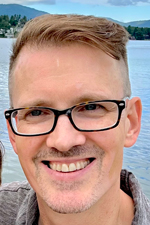
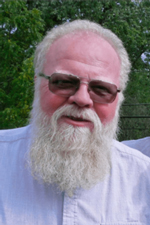 Jason D. Salter (Ph.D. URMC ’10), scientist working with Dr. Harold C. Smith at OyaGen, Inc (www.oyageninc.com) has been awarded as PI an NIH SBIR phase I two year grant for $600,000 to conduct high throughput, high content screening for a novel therapeutic that will prevent the Ebola virus from assembling infectious virions. The NIH award enabled the company to purchase a 100,000 compound diversity putlibrary and an Agilent Cytation high content, high through cell analyzer for drug discovery. A live cell assay for Ebola VP40 capsid assemble has been optimized with which compound library screening will be conducted this fall.
Jason D. Salter (Ph.D. URMC ’10), scientist working with Dr. Harold C. Smith at OyaGen, Inc (www.oyageninc.com) has been awarded as PI an NIH SBIR phase I two year grant for $600,000 to conduct high throughput, high content screening for a novel therapeutic that will prevent the Ebola virus from assembling infectious virions. The NIH award enabled the company to purchase a 100,000 compound diversity putlibrary and an Agilent Cytation high content, high through cell analyzer for drug discovery. A live cell assay for Ebola VP40 capsid assemble has been optimized with which compound library screening will be conducted this fall.
Biochemistry Professor’s Company Develops Potential Drug for Ebola and COVID
Thursday, October 12, 2023
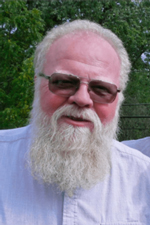
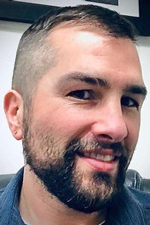 Professor Harold C. Smith, founder and CEO of OyaGen, Inc (www.oyageninc.com) and Ryan P. Bennett, Chief Scientific Officer at OyaGen (Biochemistry Ph.D. URMC ’07) have developed a therapeutic lead with highly potent antiviral activity for viruses that rely on RNA dependent RNA polymerases for their replication such as COVID, Ebola and Lassa virus. The preclinical data have been recently published in Antiviral Research (PMID: 37690700 DOI: 10.1016/j.antiviral.2023.105716) and two patents for the lead compound as a therapeutic for COVID and Ebola have been issued this year. OyaGen is conducting NIH grant funded antiviral efficacy testing in a hamster lung model as the last of four preIND studies recommended by the FDA prior to consideration of regulatory approval for Phase I clinical trials.
Professor Harold C. Smith, founder and CEO of OyaGen, Inc (www.oyageninc.com) and Ryan P. Bennett, Chief Scientific Officer at OyaGen (Biochemistry Ph.D. URMC ’07) have developed a therapeutic lead with highly potent antiviral activity for viruses that rely on RNA dependent RNA polymerases for their replication such as COVID, Ebola and Lassa virus. The preclinical data have been recently published in Antiviral Research (PMID: 37690700 DOI: 10.1016/j.antiviral.2023.105716) and two patents for the lead compound as a therapeutic for COVID and Ebola have been issued this year. OyaGen is conducting NIH grant funded antiviral efficacy testing in a hamster lung model as the last of four preIND studies recommended by the FDA prior to consideration of regulatory approval for Phase I clinical trials.
CannaMetrix Develops Potency Estimation System for Cannabinoids
Thursday, October 12, 2023
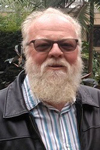
 DBB professor Harold C. Smith, founder and CEO of CannaMetrix, LLC (https://cannametrix.org/) and Charles O. Wolffsmith (Ph.D. ’18 URMC) have developed quantitative human cell-based potency for anticipating the biological potency of cannabinoids and blends of cannabinoids in the human body. Current cannabis industry standards only estimate potency using chemical composition analysis of cannabinoid products. CannaMetrix developed the EC50 Reporter assay in recognition that blends of cannabinoids have complex effects on the endocannabinoid system and that potency is a biological phenomenon. A patent for the CannaMetrix cell-based potency assay has been issued this year. Assay development has been supported by XXII Century Group out of Buffalo, NY through $2+ million licensing agreement. Current studies use the EC50 Reporter assay to assess the potency of commercial blends of synthetic cannabinoids and as a guide for developing new varieties of Cannabis.
DBB professor Harold C. Smith, founder and CEO of CannaMetrix, LLC (https://cannametrix.org/) and Charles O. Wolffsmith (Ph.D. ’18 URMC) have developed quantitative human cell-based potency for anticipating the biological potency of cannabinoids and blends of cannabinoids in the human body. Current cannabis industry standards only estimate potency using chemical composition analysis of cannabinoid products. CannaMetrix developed the EC50 Reporter assay in recognition that blends of cannabinoids have complex effects on the endocannabinoid system and that potency is a biological phenomenon. A patent for the CannaMetrix cell-based potency assay has been issued this year. Assay development has been supported by XXII Century Group out of Buffalo, NY through $2+ million licensing agreement. Current studies use the EC50 Reporter assay to assess the potency of commercial blends of synthetic cannabinoids and as a guide for developing new varieties of Cannabis.
Biochemistry Ph.D Student Madeline Jensen Receives Perfect Score on NIH Fellowship Application
Tuesday, September 5, 2023
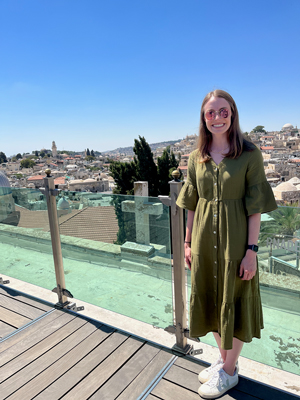
Madeline Jensen in Israel in early August
Congratulations to third-year BMB Graduate Student, Madeline Jensen, in getting a fundable score on her NIH F31 submission entitled ‘Identification and structural basis of a potential licensing factor of the Integrator cleavage module’. Ms. Jensen received the top possible score on her application that can be assigned by an NIH review panel. This three-year NIH pre-doctoral fellowship will support her thesis project in the Wagner lab where she will continue her exciting studies of BRAT1, Integrator, and& potential connections to DNA damage. She also recently attended the ‘RNA Summer School’ held in Jerusalem, an NSF-BSF-funded two-week lab-intensive course.
Congratulations Maddie!
UR Center for RNA Biology Members and Alumni Attend RNA 2023 in Singapore
Friday, June 9, 2023
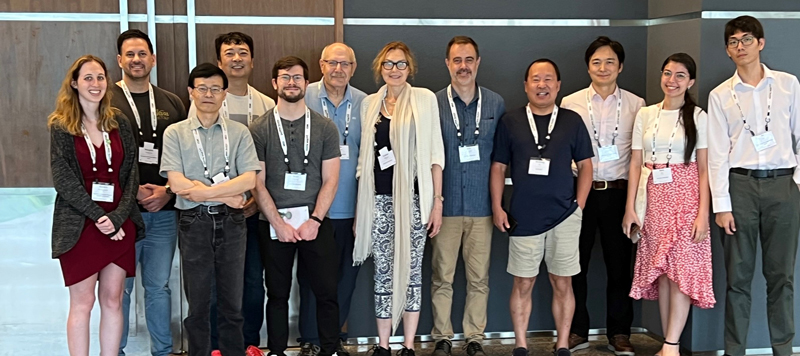
Pictured above, from left to right: Jessica Perciaccante (Genetics Grad Student, Anderson Lab); Douglas Anderson, PhD (Assistant Professor, Medicine, Aab CVRI); Yi-Tao Yu, PhD (Professor of Biochemistry & Biophysics); Xin Li, PhD (former UR Biochemistry & Biophysics Faculty, currently Professor at Zhejiang University); Sean Lindley (Biology Grad Student, Anderson Lab); Eric Phizicky, PhD (Professor of Biochemistry & Biophysics); Lynne Maquat, PhD (Professor of Biochemistry & Biophysics; Director of the UR CRB ); Eric J. Wagner, PhD (Professor of Biochemistry & Biophysics; Associate Director of the UR CRB); Weifeng Gu, PhD (UR Alumn – PhD 2005, currently Assistant Professor, UCR); Tatsuaki Kurosaki, PhD (Research Assistant Professor, Maquat Lab); Sara Ali (Biophysics Grad Student, Mathews Lab), Yi Pan (Biochemistry Grad Student, Yu Lab)
A large number of UR Center for RNA Biology members and alumni attended the 28th Annual RNA Society Meeting (‘RNA 2023’) held at the Suntec Convention Centre from May 30th-June 4th, 2023. In addition to those pictured, Douglas Turner, PhD, Professor Emeritus of the Department of Biochemistry and Member Emeritus of the Center for RNA Biology, attended and received the 2023 The RNA Society/Cold Spring Harbor Laboratory Press Distinguished Research Mentor Award, which recognizes outstanding mentorship by RNA Society members and highlights the importance of fostering the academic and professional development of trainees in RNA research.
Read More: UR Center for RNA Biology Members and Alumni Attend RNA 2023 in SingaporeSayeeda Zain Spring travel award winners
Tuesday, May 30, 2023
We are pleased to announce the winners of the Sayeeda Zain Spring Travel awards: Brandon Davis, Xueyang He and Matthew Raymonda.


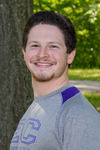
The Sayeeda Zain Travel Award honors the distinguished career and charitable life of Dr. Sayeeda Zain. The award is given in the fall and spring semesters in recognition of research excellence to support travel and related expenses for attendance at a scientific conference or corporate internship to gain practical experience. The next round of Sayeeda Zain Travel Awards will be offered in Fall 2023.
Thank you to all those who applied and congratulations to Brandon, Xueyang and Matt!
A Search Engine for mRNA: Algorithm Identifies Optimal Sequences to Improve COVID Vaccines
Friday, May 19, 2023
Messenger RNA vaccines proved their worth in the COVID pandemic, and new software stands to make the already transformative technology even more powerful.
Scientists developed an algorithm to identify the most stable, efficient mRNA sequences for vaccines. Tests show that the algorithm-derived mRNAs resist deterioration longer, produce more COVID spike protein, and dramatically increase antibody levels in mice compared to currently used mRNA vaccines. The results were reported in the journal Nature.
Study authors believe their tool will be valuable to companies that make mRNA vaccines and to research teams developing mRNA-based therapies for genetic disorders, cancer and a plethora of other diseases that can be treated by using mRNA to express a needed protein.
Searching for the Strongest mRNA
The COVID shots given throughout the pandemic have many advantages—scalable production, safety, efficacy—but suffer from some big drawbacks, including the need for ultra-cold storage and the resultant distribution challenges, and waning immunity. These limitations are due to the fact that mRNAs are inherently unstable and prone to degradation (they are constantly being “eaten” by enzymes present in cells).
The “secret sauce” for creating stronger mRNA sequences requires the right balance of two factors: structure and genetic code. Past research shows that mRNAs with a tight, rigid structure, as opposed to a floppy, unconfined structure, degrade more slowly (structure consolidates mRNAs and provides protection from hungry enzymes). Consequently, they stay in cells for a longer period and have more time to make the desired protein.
The mRNA used in COVID vaccines directs our bodies to make the COVID spike protein. The number of mRNA sequences that encode the spike protein is enormous—larger than the number of atoms in the universe. But, some of these genetic instructions are more efficient than others: one set may allow cells to churn out protein more quickly, while a different set might have redundancies that lead to sluggish protein production.
So, how do you find the right combination of structure and code? RNA expert David Mathews, MD, PhD and computer scientist Liang Huang, PhD, collaborated to create an algorithm that assesses both factors. Like a Google search for mRNA sequences, their algorithm spits out the top result for a specific protein amongst the almost infinite number of possibilities.
“Our tool is designed to identify the best sequence out of a huge space that you could never explore experimentally,” said Mathews, co-corresponding author of the Nature study and the Lynne E. Maquat professor of Biochemistry and Biophysics at the University of Rochester Medical Center. “Prior approaches did a poor job of searching this space. We hope this breakthrough will help companies to develop or improve their mRNA therapies.”
Read More: A Search Engine for mRNA: Algorithm Identifies Optimal Sequences to Improve COVID VaccinesDavid Mathews Publishes Study in Nature on Algorithm to Optimize mRNA Vaccines
Thursday, May 4, 2023
The professor of Biochemistry and Biophysics partnered with an Oregon State University computer scientist to develop the algorithm to help research teams find the most stable, efficient mRNA sequences for vaccines and other therapies, such as monoclonal antibodies and anti-cancer drugs. Tested in COVID-19 mRNA vaccines, the algorithm substantially increased protein expression and antibody levels compared to currently used mRNA sequences.
Read More: David Mathews Publishes Study in Nature on Algorithm to Optimize mRNA VaccinesPulling the Plug on Viral Infections: CRISPR isn’t Just About Cutting
Thursday, April 27, 2023
Study shows how a Cas protein partners with a unique membrane protein to stop viral infection
CRISPR claimed scientific fame for its ability to quickly and accurately edit genes. But, at the core, CRISPR systems are immune systems that help bacteria protect themselves from viruses by targeting and destroying viral DNA and RNA. A new study published in Science reveals a previously unrecognized player in one such system – a membrane protein that enhances anti-viral defense – simultaneously broadening our understanding of and raising more questions related to the complexities of CRISPR.
Uncovering New Clues about CRISPR
CRISPR systems consist of two major components – a guide RNA that targets a specific viral DNA or RNA sequence and a Cas enzyme that cuts the targeted DNA or RNA, preventing a virus from replicating and spreading. A team at the University of Rochester Center for RNA Biology found that a specific Cas protein (Cas13b) not only cuts viral RNA, but communicates with another protein (Csx28) to augment its anti-viral defense.
In partnership with scientists at Cornell, the team discovered that the Csx28 protein forms a pore-like structure (i.e. it has a big hole in it). When they infected E. coli with a phage (virus that attacks bacteria) and deployed the CRISPR-Cas13 system to target and halt infection, they found that Cas13 signals to Csx28 to affect membrane permeability. Once this happens, Csx28 wreaks havoc in the infected cell, discombobulating membrane potential, crushing metabolism and hindering energy production. A virus can’t replicate under such unhospitable circumstances, leading to the team’s conclusion that Csx28 enhances CRISPR-Cas13b’s phage defense.
“This finding upends the idea that CRISPR systems mount their defense only by degrading RNA and DNA in cells and really broadens our view of how CRISPR systems may be working,” said corresponding author Mitchell O’Connell, PhD, assistant professor of Biochemistry and Biophysics at the University of Rochester Medical Center (URMC) and a member of the UR Center for RNA Biology. “When we think about CRISPR, we see Cas proteins such as Cas9 or Cas13 as the big hammer doing all the damage, but that might not be the case; we found that Cas13 and Csx28 are working together to effectively extinguish a virus.”
“When you read this paper you think to yourself…‘what?’ This is such a weird mechanism and not the way I would have predicted that bacteria would work,” added John Lueck, PhD, assistant professor of Pharmacology and Physiology at URMC. “It is really impressive that the team identified this pore-like protein that doesn’t resemble anything else we’ve seen before, and now that we know that this mechanism exists people will start to look for it in other systems. This is exciting because in science, when you scratch the surface, you often find that there is an entirely new world behind it.”
Read More: Pulling the Plug on Viral Infections: CRISPR isn’t Just About CuttingFormer Biochemistry Student Ethan Walker Wins Major Award from the ASBMB
Wednesday, April 5, 2023
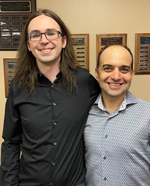 Congratulations to Ethan Walker, who recently was awarded the JBC Herbert Tabor Early Career Investigator Award. Ethan did his Biochemistry Ph.D. work in the laboratory of Sina Ghaemmaghami in the Biology Department at the University of Rochester, and shared his research findings on methionine and protein stability at the 2023 Discover BMB meeting in Seattle Washington. He is currently at Postdoctoral Associate at the Broad Institute if MIT and Harvard, where he is studying drug development for prion diseases. Ethan received his B.S. in Biochemistry at the State University of New York at Oswego, where he graduated Summa Cum Laude.
Congratulations to Ethan Walker, who recently was awarded the JBC Herbert Tabor Early Career Investigator Award. Ethan did his Biochemistry Ph.D. work in the laboratory of Sina Ghaemmaghami in the Biology Department at the University of Rochester, and shared his research findings on methionine and protein stability at the 2023 Discover BMB meeting in Seattle Washington. He is currently at Postdoctoral Associate at the Broad Institute if MIT and Harvard, where he is studying drug development for prion diseases. Ethan received his B.S. in Biochemistry at the State University of New York at Oswego, where he graduated Summa Cum Laude.
Congratulations Ethan!
2023 RNA Institute Symposium: UR Talks and Awards
Tuesday, April 4, 2023
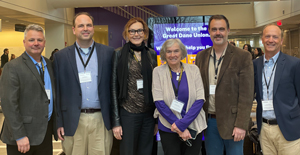 The 2023 RNA Institute Symposium, a collaborative event hosted by The RNA Institute at the University at Albany (UAlbany) and the University of Rochester (UR) Center for RNA Biology, was held March 16-17, 2023, at UAlbany. This two-day event was co-organized by Lynne Maquat, PhD, Dave Matthews, MD, PhD, Eric Wagner, PhD from the UR Center for RNA Biology, and J. Andrew Berglund, PhD and Marlene Belfort, PhD from The RNA Institute at UAlbany.
The 2023 RNA Institute Symposium, a collaborative event hosted by The RNA Institute at the University at Albany (UAlbany) and the University of Rochester (UR) Center for RNA Biology, was held March 16-17, 2023, at UAlbany. This two-day event was co-organized by Lynne Maquat, PhD, Dave Matthews, MD, PhD, Eric Wagner, PhD from the UR Center for RNA Biology, and J. Andrew Berglund, PhD and Marlene Belfort, PhD from The RNA Institute at UAlbany.
The large-scale event provided a forum for faculty and students to present their research and network with colleagues, featuring speakers from companies with origins in UAlbany and UR research programs, including Codomax, SupreMEtric, Scriptr, and sxRNA.
The Symposium, hosting ~260 attendees, featured 8 trainee talks, 28 lightning talks, 122 posters from students and postdocs/research faculty, and several invited talks by faculty and industry representatives – including Douglas Anderson, PhD of the Aab CVRI and Scriptr Global and Lynne Maquat, PhD, Director of the Center for RNA Biology and Professor in the Department of Biochemistry & Biophysics. Participants from the UR included 38 graduate students, postdocs, and faculty.
As a co-organizer of this event, Dr. Maquat also hosted the Award Ceremony with Thomas Begley, PhD (Associate Director, The RNA Institute at UAlbany). Details on the student talks and the awards given to UR participants are shown below. The overall Symposium schedule and highlights can be found on the event site: https://www.albany.edu/rna/rna-symposium.
UR Participant Photos
Talks
|
UR Student Talks (8 mins + 2 mins Q&A)
|
|
Lily Cisco
Graduate Student, Lueck Lab, CMPP
|
Benefit of Verapamil on Myotonic Dystrophy Bi-Channelopathy
|
|
Xueyang He
Graduate Student, Boutz Lab, BSCB
|
Modeling the Effects of Cancer-Associated Spliceosome Mutations and Identifying Driving Intronic Features using Deep-Learning Neural Networks
|
|
Madeline (Maddie) Jensen
Graduate Student, Wagner Lab, BMB
|
Identification and Structural Basis of a Novel Licensing Factor of the Integrator Cleavage Module
|
|
UR Student and Postdoc Lightning Talks (2 mins + 1 slide)
|
|
Elizabeth Abshire, PhD
Postdoc, Maquat Lab, DBB
|
AKT Constitutes a Signal-Promoted Alternative Exon-Junction Complex that Regulates Nonsense-Mediated mRNA Decay
|
|
Sara Ali
Graduate Student, Mathews Lab, BSCB
|
Mutate2test: New Algorithm and Software for Mutational Design
|
|
Diego Arévalo
Graduate Student, Miller Lab, CHEM
|
Expanding the Known Structure Space for RNA Binding: A Test of 2,5-diketopiperazine
|
|
Dakarai Esgdaille
Graduate Student, Boutz / Mello Labs, BGG
|
Defining the Regulatory Role of Nuclear Paraspeckles in RNA Splicing in the Context of Pancreatic Tumors
|
|
Justin Galardi
Graduate Student, Kielkopf Lab, BMB
|
HIV-1 Rev Regulates Host Transcription and RNA Processing Factor TatSF1 to Promote HIV-1 Infectivity
|
|
Omar Hedaya
Graduate Student, Yao Lab, BMB
|
Secondary Structures that Regulate mRNA Translation Provide Insights for ASO-Mediated Modulation of Protein Expression
|
|
Wooree Ko
Graduate Student, Lueck Lab, CMPP
|
Anticodon-Engineered Transfer RNA for the Treatment of Nonsense-Associated Cystic Fibrosis
|
|
Adrian Molina Vargas
Graduate Student, O’Connell Lab, BGG
|
Development of New Strategies for the Design of Ultrasensitive Cas13a-Based RNA-Diagnostic Tools with Single-Nucleotide Mismatch Sensitivity
|
Awards
|
Only two total Trainee Speaker Awards were given out, one of which was presented to a UR participant:
|
|
Lily Cisco
Graduate Student, Lueck Lab, CMPP
|
Benefit of Verapamil on Myotonic Dystrophy Bi-Channelopathy
|
|
UR Poster Awards (Recipients of cash awards)
|
|
Hironori (Hiro) Adachi, PhD
Staff Scientist/Postdoc, Yu Lab, DBB
|
Targeted Pseudouridylation: An approach for Suppressing Nonsense Mutations in Disease Genes
|
|
Sara Ali
Graduate Student, Mathews Lab, BSCB
|
Mutate2test: New Algorithm and Software for Mutational Design
|
|
Dakarai Esgdaille
Graduate Student, Boutz / Mello Labs, BGG
|
Defining the Regulatory Role of Nuclear Paraspeckles in RNA Splicing in the Context of Pancreatic Tumors
|
|
Jordana Schmierer
Graduate Student, Takimoto Lab, IMV
|
Host Adaptative Mutations in the pH1N1 PA CTD Affect Genome Replication
|
|
Elinore VanGraafeiland
Graduate Student, Miller Lab, BMB
|
Targeting Programmed Ribosomal Frameshifting in SARS-CoV-2 with a Resin-Bound Dynamic Combinatorial Library
|
|
UR RNA Society Awards (recipients of one-year RNA Society Memberships)
|
|
Elizabeth Abshire, PhD
Postdoc, Maquat Lab, DBB
|
AKT Constitutes a Signal-Promoted Alternative Exon-Junction Complex that Regulates Nonsense-Mediated mRNA Decay
|
|
Wooree Ko
Graduate Student, Lueck Lab, CMPP
|
Anticodon-Engineered Transfer RNA for the Treatment of Nonsense-Associated Cystic Fibrosis
|
|
Jessica Perciaccante
Graduate Student, Anderson Lab, BGG
|
The CARDINAL lncRNA Represses TCF-SRF-Mediated Gene Transcription by Co-Occupying SRF-Bound Gene Promoters in the Heart
|
NYS Center for Excellence in RNA Research and Therapeutics (CERRT). This Symposium reflects an ongoing commitment between the University of Rochester Center for RNA Biology and The RNA Institute at the University at Albany-SUNY to train the next generation of RNA Scientists. This endeavor is occurring in real-time and alongside the NYS Biotech industry to develop an academic pipeline to fuel NYS efforts in harnessing RNA as a therapeutic tool and target.
CALL FOR ABSTRACTS: 2023 Young Investigator Symposium on RNA Biology (hosted by Dr. Xin Li)
Friday, March 10, 2023
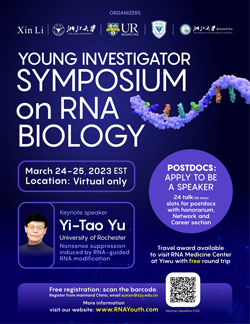 Register (free!) and, postdocs/research-track faculty, submit your abstracts by March 20th: 2023
Register (free!) and, postdocs/research-track faculty, submit your abstracts by March 20th: 2023
2023 Young Investigator Symposium on RNA Biology
Dates: March 24-25, 2023
Venue: VIRTUAL via Zoom Webinar. Please register to obtain the link.
Application Deadline: March 20th, 2023
Register and/or Apply Here (All virtual attendees and talk applicants must register.)
The 2023 Young Investigator Symposium on RNA Biology is co-organized by Xin Li, PhD, Associate Professor at the University of Rochester, the RNA Medical Center of Zhejiang University, and the University of Rochester Center for RNA Biology. The Symposium is free to attend and is focused on talks by dedicated postdocs, instructors, and young (associate) researchers from around the world, in addition to the keynote by Yi-Tao Yu, PhD, Professor of Biochemistry & Biophysics at the University of Rochester. The symposium will feature over 20 scholars, each presenting their cutting-edge research for 30 minutes. It will also feature two career sections on networking and job hunting.
Schedule
Friday, March 24th: Virtual format, opening remarks and then talks, starting at 8:20 am EDT
Saturday, March 25th: Virtual talks and Keynote for a half day, starting at 8:30 am EDT
The symposium will also include two virtual career sections on networking and job hunting. Please see the event website for updates on the program and speakers.
Speakers:
(KEYNOTE) Yi-Tao Yu, University of Rochester
Title: Nonsense suppression induced by RNA-guided RNA modification
Qinqin Cui, Zhejiang University
Title: Diverse CMT2 neuropathies are linked to aberrant G3BP interactions in stress granules
Junnan Fang, Emory University
Title: Isoform expression and the post-transcriptional regulations of centrosome Plp mRNA
Wenxia He, University of North Carolina at Chapel Hill
Title: The Degradation Complex on the 3’ End of Histone mRNA
Yanqiang Li, Harvard Medical School
Title: Low RNA stability signifies increased post-transcriptional regulation of cell identity gene
Ling Liu, University of Manitoba, Canada
Title: Mechanism of Adaptive Splicing Controlled by DNA Methylation
Jianjun Luo, Institute of Biophysics, Chinese Academy of Sciences
Title: Systematic Identification and Functional Studies of Long Noncoding RNAs and SEPs
Yicheng Luo, California Institute of Technology
Title: Maternally inherited siRNAs initiate piRNA cluster formation
Maria Mavrikaki, Harvard Medical School, Beth Israel Deaconess Medical Center
Title: Severe COVID-19 is associated with molecular signatures of aging in the human brain
JingRong Zhao, University of California
Title: Molecular profiling of individual FDA-approved clinical drugs identifies modulators of nonsense-mediated mRNA decay
Zhengjie Zhou, The University of Chicago
Title: Vascular targeted mRNA therapies treating cute Respiratory Distress Syndrome
Please send any questions to Xin Li, PhD
Study: Yi-Tao Yu, Paul Boutz Harness Power, Precision of RNA to Make Mutations Invisible
Monday, March 6, 2023
Scientists have discovered a new way to suppress mutations that lead to a wide range of genetic disorders. A study in the journal Molecular Cell describes a strategy that co-opts a normal RNA modification process within cells to transform disease genes into normal genes that produce healthy proteins. The findings are significant because they may ultimately help researchers alter the course of devastating disorders such as cystic fibrosis, muscular dystrophy and many forms of cancer.
Negating Nonsense
Around 15 percent of mutations that lead to genetic diseases are called nonsense mutations. Aptly named, nonsense mutations occur when an mRNA molecule contains an early “stop” signal. When the mRNA takes genetic instructions from DNA to create a protein, this early stop sign orders the cell to stop reading the instructions partway through the process. This results in the creation of an incomplete protein that can lead to disease.

Led by Yi-Tao Yu, PhD, a team of researchers from the University of Rochester Center for RNA Biology designed an artificial guide RNA – a piece of RNA that can modify other types of RNA – to target mRNA molecules that contain early stop signals (also called premature termination codons). Guide RNAs are a natural mechanism that cells use all the time; Yu’s team altered this already existing process.
Like DNA, RNA is made up of molecular building blocks that are represented by the letters A (adenine), G (guanine), U (uracil), and C (cytosine). Premature termination codons always have the building block U in the first position (for example, UAG, UAA or UGA). The team’s artificial guide RNA was designed to modify the U in the first position, changing the molecular makeup of the targeted mRNA so that the stop signal is no longer – or less well – recognized by the cell.
Read More: Study: Yi-Tao Yu, Paul Boutz Harness Power, Precision of RNA to Make Mutations InvisibleRNA Biologist Lynne Maquat Awarded 2023 Gruber Genetics Prize
Thursday, February 23, 2023
Lynne E. Maquat, PhD, the founding director of the Center for RNA Biology at the University of Rochester, has been awarded the 2023 Gruber Genetics Prize for her discovery of nonsense-mediated mRNA decay or NMD in humans. The Gruber International Prize Program, administered by Yale University, honors scientists from around the world whose groundbreaking work leads to fundamental shifts in knowledge and benefits mankind.
Maquat has spent her career deciphering the many roles that RNA plays in sickness and in health, and is best known for elucidating the complexities of NMD in mammalian cells and human disease. One of the major surveillance systems in the body, NMD protects against mistakes in gene expression by targeting and eliminating deleterious mRNAs that could lead to the production of incomplete and potentially toxic proteins. Maquat’s lab also revealed that NMD helps our cells adjust to changes in development and in their environment, and more rapidly respond to certain stimuli.
“Lynne’s scientific prowess and steadfast commitment to her research is exemplary and has helped catapult the field of RNA biology to the forefront of medicine over the past decade,” said Mark B. Taubman, MD, CEO of the University of Rochester Medical Center and dean of the School of Medicine and Dentistry. “This is an exciting time, as Lynne and other scientists are putting her mechanistic findings related to NMD to use to design treatments. She is incredibly deserving of this honor.”
Read More: RNA Biologist Lynne Maquat Awarded 2023 Gruber Genetics PrizeThree Biochemistry and Biophysics Faculty receive Wilmot Cancer Institute 2023 Team Science Pilot Awards
Thursday, February 16, 2023
Congratulations to Department of Biochemistry and Biophysics Professors Josh Munger, Eric Wagner, and Clara Kielkopf, who were each members of separate teams of researchers who received WCI 2023 Science Pilot Awards.
 Josh Munger joins team leader Isaac Harris, Ph.D., and members Calvin Cole, Ph.D., and David Linehan, M.D. in a project entitled “Elucidating the Role of GSH in Cancer-Associated Cachexia”.
Josh Munger joins team leader Isaac Harris, Ph.D., and members Calvin Cole, Ph.D., and David Linehan, M.D. in a project entitled “Elucidating the Role of GSH in Cancer-Associated Cachexia”.
 Eric Wagner joins forces with Brian Marples, Ph.D., professor in the Department of Radiation Oncology, in a project entitled "BRAT1 May Recruit INTS11 RNA Cleavage Activity to Areas of DNA Damage to Impact Local Transcription Complexes”
Eric Wagner joins forces with Brian Marples, Ph.D., professor in the Department of Radiation Oncology, in a project entitled "BRAT1 May Recruit INTS11 RNA Cleavage Activity to Areas of DNA Damage to Impact Local Transcription Complexes”
 Finally, Clara Kielkopf is a member of a large team of researchers lead by Jane Liesveld, M.D., who will focus on a project entitled "The Role of Mesenchymal Stromal Cells and Aging in Myelodysplastic Syndromes”
Finally, Clara Kielkopf is a member of a large team of researchers lead by Jane Liesveld, M.D., who will focus on a project entitled "The Role of Mesenchymal Stromal Cells and Aging in Myelodysplastic Syndromes”
The awards are intended to fund projects that can develop inter-programmatic collaborations, and are aligned with the WCI strategic plan. Each of the projects receives $75,000 for exploratory research.
Work pioneered by Yi-Tao Yu highlighted in new studies
Thursday, February 16, 2023
Rewriting the message: Harnessing RNA pseudouridylation to tackle disease
Matias Montes, Nicole M. Martínez DOI:https://doi.org/10.1016/j.molcel.2023.02.001
Two recent papers in Molecular Cell made strides toward two worthy goals: (1) site-specific modification of RNAs with pseudouridine (Ψ) for functional studies of the epitranscriptome and (2) correction of disease-causing PTCs through Ψ-mediated stop codon readthrough. Both studies build on pioneering work from Yu and colleagues that first showed the potential to engineer small nucleolar RNAs (snoRNAs) for targeted pseudouridylation of stop codons in yeast and discovered that pseudouridylated stop codons suppressed translation termination when artificially introduced in mRNAs.
Read More: Work pioneered by Yi-Tao Yu highlighted in new studiesFormer Graduate of the Biochemistry Ph.D. Program was longtime Professor at Brandeis University
Wednesday, January 11, 2023
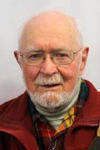 Thomas Clyde Hollocher Jr., a former graduate of the Biochemistry Program at the University of Rochester, passed away on November 3, 2022, at age 91. He received his Ph.D. in 1958, working with Professors Martin Morrison and Elmer Stotz. His thesis was entitled “Kinetic Studies on the Cytochrome C – Cytochrome Oxidase reaction”, where he extended studies of partially soluble systems to reactions in mitochondria capable of oxidative phosphorylation and feedback effects. He went on to a long career at Brandeis University where he taught for 38 years, and lead an active research program in the elucidation and mechanism of bacterial enzymes that carry out denitrification (the reduction of nitrogen oxides to di-nitrogen by bacteria, an alternative to aerobic respiration, and affecting the proportions of nitrogen and oxygen the earth's atmosphere.) He has over 80 research publications, including some related to his interests in chemical paleontology. Most recently Dr. Hollocher held the title of Emeritus Professor of Biochemistry at Brandeis.
Thomas Clyde Hollocher Jr., a former graduate of the Biochemistry Program at the University of Rochester, passed away on November 3, 2022, at age 91. He received his Ph.D. in 1958, working with Professors Martin Morrison and Elmer Stotz. His thesis was entitled “Kinetic Studies on the Cytochrome C – Cytochrome Oxidase reaction”, where he extended studies of partially soluble systems to reactions in mitochondria capable of oxidative phosphorylation and feedback effects. He went on to a long career at Brandeis University where he taught for 38 years, and lead an active research program in the elucidation and mechanism of bacterial enzymes that carry out denitrification (the reduction of nitrogen oxides to di-nitrogen by bacteria, an alternative to aerobic respiration, and affecting the proportions of nitrogen and oxygen the earth's atmosphere.) He has over 80 research publications, including some related to his interests in chemical paleontology. Most recently Dr. Hollocher held the title of Emeritus Professor of Biochemistry at Brandeis.
Sayeeda Zain fall travel award winners
Thursday, December 15, 2022
We are pleased to announce the winners of the Sayeeda Zain Fall Travel awards: Gabrielle Kosoy, Franziska Stegemann, Jennifer Twardowski and Adrian Molina Vargas.
The Sayeeda Zain Travel Award honors the distinguished career and charitable life of Dr. Sayeeda Zain. The award is given in the fall and spring semesters in recognition of research excellence to support travel and related expenses for attendance at a scientific conference or corporate internship to gain practical experience. The next round of Sayeeda Zain Travel Awards will be offered in Spring 2023.
Thank you to all those who applied and congratulations to Gabrielle, Franziska, Jennifer and Adrian!




Biochemistry and Biophysics Department Student Attends Cold Spring Harbor Laboratory cryo Electron Microscopy Course
Monday, November 28, 2022
Congratulations to PhD candidate Christopher Kirchhoff for attending the competitive, two-week course on cryo electron microscopy (cryoEM) at the Cold Spring Harbor Laboratory (CSHL). The goal of the CSHL course is to equip young investigators with the tools to determine cryoEM structures with rigor and reproducibility.
Chris will use his CSHL training to determine cryoEM structures of splicing factors in the Kielkopf lab.
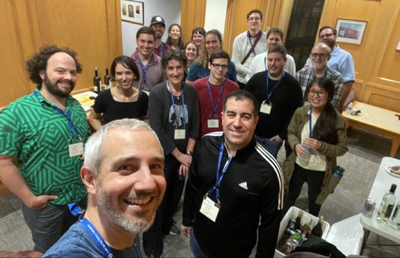
Dr. Kevin Campbell to present the inaugural Paul LaCelle Lecture November 2, 2022
Monday, November 7, 2022
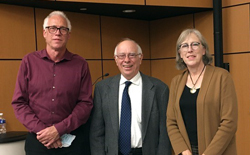
Professors Peter LaCelle, Kevin Campbell, and Kristina LaCelle-Peterson
On Nov. 2, Dr. Kevin Campbell, from the Department of Molecular Physiology and Biophysics of the University of Iowa presented the inaugural lecture in a newly-endowed annual lecture series honoring the memory of Paul LaCelle, M.D. The lecture, entitled “Mechanistic Insights and Therapeutic Approaches for Matriglycan-Deficient Muscular Dystrophy,” described Dr. Campbell’s research into fundamental biochemical aspects of muscle physiology, as well as applications of his work to understanding and treating muscle diseases. Dr. Campbell received his Ph.D. degree in Biophysics from the University of Rochester in 1979. He is currently a Howard Hughes Investigator, chair of the Department of Molecular Physiology and Biophysics, and director of the Wellstone Muscular Dystrophy Specialized Research Center at the University of Iowa. Dr. Campbell is the author of nearly 500 scientific publications and has received many honors and awards including membership in the National Academy of Sciences.
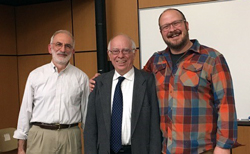
Professors Mark Dumont, Kevin Campbell, and John Lueck
The LaCelle lecture series, which is expected to be an annual event, was initiated to honor the memory of Dr. Paul LaCelle, a collegial and esteemed member of the URMC faculty for 48 years. Dr. LaCelle, who received his M.D. degree from the University of Rochester in 1959, served as chair of the Department of Biophysics for 19 years and as Senior Associate Dean for Graduate Studies for 12 years until his retirement in 2008. The Department of Biochemistry and Biophysics was pleased that the inaugural LaCelle lecture was be attended by Dr. LaCelle’s son, Dr. Peter LaCelle, Professor of Biology at Roberts Wesleyan University, and his daughter, Dr. Kristina LaCelle Peterson, Professor of Religion at Houghton College.
Passing of Emeritus Professor George Kimmich, PhD
Tuesday, October 25, 2022
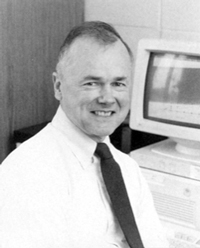 George Kimmich, PhD Emeritus Professor and former Professor in Biochemistry and Biophysics passed away October 8th, 2022 at the age of 80. Funeral services were conducted Tuesday October 18, 2022 at the Edgewood Church, 111 East Jefferson Road, Pittsford, New York. An obituary can be found here:
George Kimmich, PhD Emeritus Professor and former Professor in Biochemistry and Biophysics passed away October 8th, 2022 at the age of 80. Funeral services were conducted Tuesday October 18, 2022 at the Edgewood Church, 111 East Jefferson Road, Pittsford, New York. An obituary can be found here:
https://www.swartzfuneralhomeinc.com/obituary/george-kimmich.
George first joined the university as an Assistant Professor in the Biophysics Department in July 1970, and was appointed to the rank of Professor in 1983. He led an active research program for decades with interests in the biophysics of membrane ion channels and metabolite co-transporters, publishing many landmark papers, mostly in collaboration with his long-standing technician, Joan Randles. He served as Editor-in-Chief for the journals Membrane Biochemistry and The American Journal of Cell Physiology, and was a member of numerous study sections and review panels. He was a highly enthusiastic and long-time lecturer in many courses across departments, including BCH 401 (now called BCH 408), winning several teaching awards, and was course director of BCH 401 for many years. He also served as Associate Chair of the Biochemistry Department, and for almost 10 years served as Associate Dean and Director of the school-wide Graduate Program in Biology and Medicine, a forerunner to our current interdepartmental graduate programs. George was a great colleague, always pleasant and affable in his interactions with others. He will be greatly missed.
A serendipitous discovery and the choreographed dance of fragile X research
Tuesday, October 18, 2022
The choreography of development is a delicate dance. Beginning in utero, chromosomes, DNA, genes and RNA twirl, tap, and sashay their way in a precise pattern. A misstep or a missing step that changes the routine causes body and brain functions to go awry – as is the case with many intellectual and developmental disabilities (IDD). Fragile X syndrome is the most common known single-gene cause of inherited IDDs, including autism. Scientists know the misstep in this syndrome is in the gene FMR1. FMR1 is responsible for making the protein FMRP, which is necessary for typical brain development.
Lynne Maquat, Ph.D., founding director of the Center for RNA Biology at the University of Rochester, and professor of Biochemistry & Biophysics, Oncology, and Pediatrics, did not set out to study fragile X. It was through another line of research – her seminal discovery of and decades’ worth of work on nonsense-mediated mRNA decay (NMD) – that fragile X syndrome entered her radar. NMD is a cellular quality-control mechanism that plays a role in both healthy and disease states, and her lab discovered that it is overactive in people with fragile X.
“It was complete serendipity,” Maquat said. “No one ever thought to look at NMD and fragile X. So now we’re trying to figure out what happens at the molecular level when FMRP is absent; we want to understand the network of altered gene expression by identifying mis-regulated messenger RNAs (mRNAs).”
One of the most prominent surveillance systems in the body that protects against mistakes in gene expression that lead to disease, NMD is a complex pathway that is at the heart of many of the collaborations between Maquat and other University of Rochester scientists. Together, with funding from the National Institutes of Health (NIH) and the FRAXA Research Foundation, they aim to gain a deeper understanding of the sophisticated mechanisms related to NMD that will contribute to developing new drug therapies for genetic disorders such as fragile X syndrome, cystic fibrosis, and hundreds of others.
INTO THE BRAIN
Associate professor of Biomedical Genetics Christoph Pröschel, Ph.D., has spent much of his career interested in neurogenetic diseases that primarily affect the white matter of the brain, which carries signals throughout the organ. His lab started working with induced pluripotent stem cells (iPSCs) to understand different neural cell types, providing a solid foundation for their IDD research. “My lab and the Maquat lab have a mutual interest in the molecular mechanism of fragile X,” said Proschel. “It is key to finding any kind of hope for a future therapy.”
The Pröschel lab makes and differentiates neural stem cells that mimic fragile X syndrome, allowing his team to test hypotheses and understand how different therapies impact cell biology and function. He and Tatsuaki Kurosaki, Ph.D., research assistant professor in the Maquat lab, used these neural stem cells to understand the relationship between FMRP and NMD. They discovered that NMD controls the amounts of messenger RNAs deriving from a wide range of genes throughout the brain, including genes that govern motor control and cognitive processes related to attention, learning, and language. They also found that when FMRP is absent from cells, as it is in people with fragile X syndrome, NMD shifts into overdrive.
This work was part of a 2021 study published in Nature Cell Biology led by Maquat that revealed that tamping down NMD with small molecule inhibitors restored a large proportion of neurological functions in these cells.
Most recently, Pröschel co-authored research published in Molecular Cell led by Maquat and co-authored by Hana Cho, Ph.D., and Elizabeth Abshire, Ph.D., of her lab. The study highlighted a complex molecular dance between NMD and the enzyme AKT, which plays a key role in cell growth and survival. Both AKT and NMD are overactive in fragile X. Using neural stem cells that lack the FMRP protein, they tested a drug called Afuresertib, which inhibits AKT. They discovered that blocking AKT in the fragile X cells decreased its activity and decreased NMD. These cells then acted more like typical, non-disease cells.
There is still a lot the team doesn’t know about how AKT and NMD interact, because they both influence and regulate multiple activities in cells, but this work provides good direction that could inform the development of future treatments for fragile X syndrome.
“This has been one of the real fun chapters of my career – working with this group,” said Pröschel. “Everyone brings such a different perspective to the project.”
FROM SURGERY TO THE LAB
As a neurotologist (subspecialist of Otolaryngology), Hitomi Sakano, M.D., Ph.D., spends time in the clinic with patients with hearing issues or hearing loss. In the lab, she aims to understand how the brain adapts to sound information.
Her work with fragile X syndrome began as a resident at the University of Washington when she took interest in FMRP, which is highly expressed in the auditory brainstem nuclei of a typical brain and is the same protein missing in fragile X patients. When Sakano came to the Medical Center in 2018, she brought the fragile X mouse model to study this and joined the Center for RNA Biology.
“I also use the [knockout] mouse model to study hyperacusis – extreme sensitivity to sound,” said Sakano. “We know that fragile X patients have sensory and auditory sensitivity, so this model is a great tool to study both.” Hyperacusis is also very common in the general population (some report up to 15 percent) so understanding the mechanism could potentially impact our broader community.
Sakano hypothesizes that FMRP regulates genes that enable neuroplasticity to maintain
From left: Hitomi Sakano, M.D., Ph.D., and Lynne Maquat, Ph.D.
normal processing of auditory information. If true, there may be therapeutic targets for symptoms like auditory hypersensitivity in fragile X. Funding from the Schmitt Program in Integrative Neuroscience (SPIN) through the Del Monte Institute for Neuroscience Pilot Program and a NIH Research Career Development Award for clinician-scientists are supporting her research, which involves investigating the gene expression abnormalities in the auditory brainstem of the fragile X mouse model that might explain the auditory hypersensitivity in these mice. To date, she has found some interesting RNAs that encode synaptic proteins. These findings open up the possibility of targeting these genes for the treatment of hyperacusis.
She co-authored a study with the Maquat and Pröschel labs in Genome Biology. The research used the mouse model whose FMR1 gene is knocked-out. These findings build upon Maquat’s previous research that showed NMD hyperactivation in neuronally induced stem cells from fragile X patients. This hyperactivity negatively impacts many neuronal mRNAs important to brain development. The Genome Biology paper showed NMD goes into overdrive in the brain during early development in a mouse with fragile X. These researchers are now testing various therapeutics to inhibit NMD.
“Being able to collaborate to gain meaningful results to move this science forward is the value of being at an academic medical center like Rochester,” said Sakano. “These steps are what will ultimately lead to treatments and therapies that I use in the clinic someday to help my patients.”
ON THE HORIZON
Forthcoming research aims to broaden the scope of the fragile X work at the Medical Center. One of the world’s largest clinics for fragile X is in Israel, where an estimated 80 percent of women are screened for the inherited disease. Michael Telias, Ph.D., assistant professor of Ophthalmology, Neuroscience, and Center for Visual Science, began studying fragile X as a graduate student in Israel. He uses human embryonic stem cells that carry the mutation for fragile X to look inside neurons at the molecular and cellular levels to shed light on the human-specific mechanisms affected by this syndrome.
“Human neurons have shown us that these cells have a problem receiving information and communicating information to the next cell,” said Telias. “We cannot do this work in humans, so using human cells enables us to know what to target in the cell. That is the only way we will be able to develop treatments that work.”
In the Frederick J. and Marion A. Schindler Cognitive Neurophysiology Laboratory, research assistant professor Tufikameni Brima, Ph.D., is aiming to use electroencephalography (EEG) and event-related potentials (ERP) to better understand how the brains of patients with fragile X respond to various stimuli. This work has the potential to build upon the ongoing molecular research being conducted by Telias and others.
“Ultimately, what we are figuring out is what happens when FMRP is absent. We don’t know the whole story,” Maquat said. “However, FMRP is an RNA-binding protein, and in work soon to be published in Molecular Cell, Kurosaki and I have now defined those messenger RNAs that are normally bound by FMRP and how the absence of FMRP binding results in those mRNAs making too much protein. These results have allowed us to identify which genes are affected and how. Our work will pave the way for better therapeutics for those living with fragile X.”
Read More: A serendipitous discovery and the choreographed dance of fragile X researchBlanton Tolbert, PhD appointed as HHMI vice president and head of the Institute’s new Center for Science Leadership and Culture
Thursday, October 6, 2022
 Former Biophysics PhD student Blanton Tolbert, Ph.D. was recently appointed as the Howard Hughes Medial Institute’s Vice President and Head of the HHMI’s Center for Science Leadership and Culture. Dr. Tolbert is currently the Rudolph and Susan Rense Professor in the Chemistry Department at Case Western University, and Vice Dean of Diversity, Equity and Inclusion at CWRU School of Medicine. Dr. Tolbert’s research employs biophysical and structural methods to understand how viral RNAs and interact with critical proteins, with a emphasis on human immunodeficiency virus RNAs. More information regarding his appointment can be found here:
Former Biophysics PhD student Blanton Tolbert, Ph.D. was recently appointed as the Howard Hughes Medial Institute’s Vice President and Head of the HHMI’s Center for Science Leadership and Culture. Dr. Tolbert is currently the Rudolph and Susan Rense Professor in the Chemistry Department at Case Western University, and Vice Dean of Diversity, Equity and Inclusion at CWRU School of Medicine. Dr. Tolbert’s research employs biophysical and structural methods to understand how viral RNAs and interact with critical proteins, with a emphasis on human immunodeficiency virus RNAs. More information regarding his appointment can be found here:
https://www.hhmi.org/news/blanton-tolbert-named-hhmis-inaugural-vice-president-science-leadership-and-culture
Professor Lea Vacca Michel pens article in ASBMB Today on unexpected challenges in removing barriers to inclusion
Wednesday, August 24, 2022
 Lea Vacca Michel, PhD, an Associate Professor at the Rochester Institute of Technology, has written an insightful article on an unexpected challenge she experienced in conducting an excursion for her group to Universal Studios in Orlando Florida. Her research group was attending a scientific meeting in Orlando and wished to explore the theme park as a fun side trip. Michel’s article, in ASBMB Today, the member magazine of the American Society for Biochemistry and Molecular Biology, is a self-critical appraisal of the excursion describing her efforts to make sure activities were enjoyable for everyone, including two deaf/hard-of-hearing members of the group. Despite apparently successful similar excursions in the past and despite Michel’s best efforts at inclusivity, the unanticipated effects of the rides at the park made her aware of new challenges. The full article can be found here (https://www.asbmb.org/asbmb-today/careers/081122/all-alone-in-a-crowd?utm_source=Emailer). Lea is active in the ASBMB and is a member of the ASBMB Minority Affairs Committee (links to other articles by and about Lea, below). Lea received her Ph.D. from the Biophysics Program in the Department of Biochemistry and Biophysics in 2007 and has taught at RIT since 2009.
Lea Vacca Michel, PhD, an Associate Professor at the Rochester Institute of Technology, has written an insightful article on an unexpected challenge she experienced in conducting an excursion for her group to Universal Studios in Orlando Florida. Her research group was attending a scientific meeting in Orlando and wished to explore the theme park as a fun side trip. Michel’s article, in ASBMB Today, the member magazine of the American Society for Biochemistry and Molecular Biology, is a self-critical appraisal of the excursion describing her efforts to make sure activities were enjoyable for everyone, including two deaf/hard-of-hearing members of the group. Despite apparently successful similar excursions in the past and despite Michel’s best efforts at inclusivity, the unanticipated effects of the rides at the park made her aware of new challenges. The full article can be found here (https://www.asbmb.org/asbmb-today/careers/081122/all-alone-in-a-crowd?utm_source=Emailer). Lea is active in the ASBMB and is a member of the ASBMB Minority Affairs Committee (links to other articles by and about Lea, below). Lea received her Ph.D. from the Biophysics Program in the Department of Biochemistry and Biophysics in 2007 and has taught at RIT since 2009.
https://www.asbmb.org/asbmb-today/opinions/031022/if-i-don-t-who-will
https://www.asbmb.org/asbmb-today/people/120121/michel-strives-to-be-a-better-mentor
Lynne Maquat Receives Advisory Appointment at International Centre for Genetic Engineering and Biotechnology
Friday, August 12, 2022

 Lynne E. Maquat, Ph.D., the J. Lowell Orbison Endowed Chair and Professor of Biochemistry and Biophysics, Oncology and Pediatrics at the University of Rochester School of Medicine & Dentistry has been elected a member of the Council of Scientific Advisers (CSA) of the International Centre for Genetic Engineering and Biotechnology (ICGEB). Also the founding director of the University of Rochester’s Center for RNA Biology, Maquat will serve as a member of the Council for a term of three years, beginning in July 2022.
Lynne E. Maquat, Ph.D., the J. Lowell Orbison Endowed Chair and Professor of Biochemistry and Biophysics, Oncology and Pediatrics at the University of Rochester School of Medicine & Dentistry has been elected a member of the Council of Scientific Advisers (CSA) of the International Centre for Genetic Engineering and Biotechnology (ICGEB). Also the founding director of the University of Rochester’s Center for RNA Biology, Maquat will serve as a member of the Council for a term of three years, beginning in July 2022.
The ICGEB is an intergovernmental organization that runs over 45 state-of-the-art laboratories in Trieste, Italy, New Delhi, India and Cape Town, South Africa. If forms an interactive network with close to 70 member states, and plays a key role in biotechnology by promoting research excellence, training, and technology transfer to industry. The Council of Scientific Advisers is composed of fifteen “eminent” scientists who are active in the life sciences at the international level. Maquat will work together with fellow advisors to provide ICGEB member states with effective training programs and dedicated research projects.
With this appointment, Maquat has held a dozen international advisory positions since 2000. In addition to the ICGEB, she is currently a member of the Scientific Advisory Board for the Max Planck Institute for Molecular Genetics in Berlin, Germany and a member of the Medical Advisory Board for the Canada Gairdner International Awards and The Gairdner Foundation in Canada.
Maquat is the second member of the University of Rochester community to be elected a member of the Council of Scientific Advisers. Arthur Kornberg, M.D., who earned his medical degree from the School of Medicine & Dentistry in 1941 and went on to receive the Nobel Prize in Physiology or Medicine in 1959, served as a scientific advisor to the ICGEB from 1995 to 2005.
Double Duty: Early Research Reveals how a Single Drug Delivers Twice the Impact in Fragile X
Monday, June 27, 2022
Like many neurological diseases, there’s a lot we don’t understand about fragile X syndrome. But, after studying the disorder for several years, Lynne Maquat’s lab knew two important things: the enzyme AKT, which plays a key role in cell growth and survival, and the quality control pathway known as NMD (nonsense-mediated mRNA decay), are both in overdrive in fragile X.
In a new study in the journal Molecular Cell, the team reveals how these two major players interact, highlighting a complex molecular dance that could inform the development of future treatments for fragile X syndrome.
Two paths to pursue
AKT is a hub for cell signaling, helping cells communicate about important processes like cell growth, proliferation and protein production. When cells are stressed – for example, in cancer, diabetes, heart disease and neurological disorders, including fragile X – AKT can send too many (or too few) signals or messages as part of a cell survival mechanism.
NMD is like a molecular guide that helps our cells make smart decisions that (in most cases) improve cellular function and contribute to good health. For example, NMD supports gene expression by flagging and destroying mRNAs (messenger RNAs) that are carrying faulty genetic instructions that could lead to disease. It also helps our cells adjust to changes in development and in their environment, and more rapidly respond to certain stimuli.
Read More: Double Duty: Early Research Reveals how a Single Drug Delivers Twice the Impact in Fragile XThree Biochemistry and Biophysics Department Students Win Hooker Fellowships
Monday, June 13, 2022
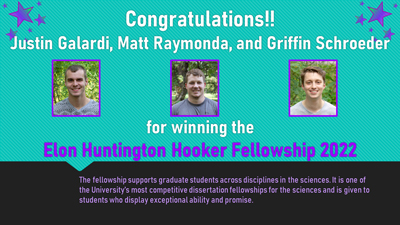 Congratulations to Justin Galardi, Matt Raymonda, and Griffin Schroeder, who won Elon Hooker Dissertation Fellowships for 2022-2023.
Congratulations to Justin Galardi, Matt Raymonda, and Griffin Schroeder, who won Elon Hooker Dissertation Fellowships for 2022-2023.
This fellowship was first endowed by the Hooker family in 1947 in memory of Mr. Elon Huntington Hooker, founder of the Hooker Chemical Company and a graduate of the University of Rochester. The fellowship supports graduate students across disciplines in the sciences, and thus is one of the University’s most competitive awards. The fellowship is given to students who display exceptional ability and promise in their dissertation research. Justin works in the Kielkopf lab, and studies the structure and function of early-stage splicing factors, Matt works in the Munger lab and studies metabolic vulnerabilities associated with viral infection, and Griffin is in the Wedekind lab and studies structural bases of translation regulation by riboswitches. These students carry on a long tradition of the Department of Biochemistry and Biophysics being well-represented among the annual Hooker awardees.
Congratulations to Justin, Matt and Griffin!
Dmitri Ermolenko awarded NIH MIRA Award
Wednesday, February 23, 2022
Congratulations to Dmitri Ermolenko on receiving prestigious NIH R35 MIRA (Maximizing Investigators' Research Award) grant. The goal of MIRA is to increase the efficiency of NIGMS funding by providing highly talented and promising investigators with greater stability and flexibility, thereby enhancing scientific productivity and the chances for important breakthroughs. The Ermolenko lab will use MIRA funding to investigate molecular mechanisms of translation by studying structural dynamics of the ribosome, and the role of mRNA secondary structure in translation regulation.
Ermolenko and Mathews groups publish in Nature Communications
Wednesday, February 23, 2022
A new study by the Ermolenko and Mathews groups, which is out in Nature Communications https://nature.com/articles/s41467-022-28600-5, shows that contrary to prevailing dogma, specific length and structure, rather than high stability, enable regulatory mRNA stem-loops to pause translation. This work was led by a talented BMB PhD student Chen Bao.
Congratulations to Chen and colleagues!
Convince us why your favorite RNA or RNA-binding protein is worthy of our admiration
Friday, January 28, 2022
Department of Biochemistry & Biophysics Seminar Series Participants,
Thank you to those who participated in and/or viewed the UR Center for RNA Biology’s RNA Presentations on Jan 12th and 26th, sponsored by the RNA Society, Lexogen, and the UR Center for RNA Biology. The judging committee was impressed with the quality of the abstracts submitted and the selected presentations given by UR graduate students and research staff with the prompt: “Convince us why your favorite RNA or RNA-binding protein is worthy of our admiration”.
Each of the oral presenters, who were chosen based on their quality of their abstracts, will be receiving a one-year membership to the RNA Society. Three presenters will also receive prize funds of $300 each.
The three presenters to be awarded a one-year membership to the RNA Society and $300 ea., in alphabetical order, are:
Xueyang He (presented Jan 12th ) - Biophysics Grad Student, Boutz Lab, Biochemistry & Biophysics
“Modeling the effects of cancer-associated spliceosome mutations and identifying driving intronic features using deep-learning neural networks”
Adrián Moisés Molina Vargas (presented Jan 26th) - Genetics Graduate Student, O'Connell Lab (Biochemistry & Biophysics), Biomedical Genetics
“From prokaryote immunity to the newest RNA targeting tool. Unveiling the nature and opportunities of the Cas13 CRISPR RNA-nuclease”
Li Xie (presented Jan 26th) - Genetics Graduate Student, Pröschel Lab, Biomedical Genetics
“Deciphering eIF2B deficiencies in a neurodegenerative disorder”
Honorable mention presenter to receive a one-year membership to the RNA Society
Perinthottathil Sreejith, PhD (presented Jan 12th ) - Staff Scientist, Bharadwaj Lab, Pathology & Laboratory Medicine, who presented on his previous work as a Postdoc in the Biteau Lab in Biomedical Genetics
“Imp interacts with Lin28 to regulate adult stem cell proliferation in the Drosophila intestine”
Again, thank you all for contributing to make our contest interesting and exciting.
Liz - On behalf of Lynne Maquat, PhD (Director, UR Center for RNA Biology)
Read More: Convince us why your favorite RNA or RNA-binding protein is worthy of our admirationDepartment of Biochemistry and Biophysics Annual Toy Drive
Wednesday, January 19, 2022
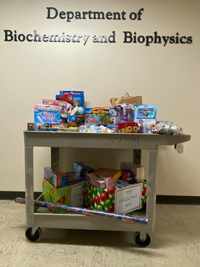 The Department of Biochemistry and Biophysics held its annual toy drive this season to collect toys and items for the Golisano Children's Hospital. Dr. Alan Grossfield delivered a cart full of goodies to the Golisano Children's hospital on Thursday, December 16th along with graduate student, Emily Robinson, and staff accountant, Amy Roman. The gifts are given to the children in the hospital during the holiday season. Any remaining gifts are used to support the needs of the children and playrooms throughout the year.
The Department of Biochemistry and Biophysics held its annual toy drive this season to collect toys and items for the Golisano Children's Hospital. Dr. Alan Grossfield delivered a cart full of goodies to the Golisano Children's hospital on Thursday, December 16th along with graduate student, Emily Robinson, and staff accountant, Amy Roman. The gifts are given to the children in the hospital during the holiday season. Any remaining gifts are used to support the needs of the children and playrooms throughout the year.
Read the thank you letter.
In the Pocket: RNA Binding Discovery Supports ‘RNA World’ Theory of Early Life on Earth
Friday, January 14, 2022
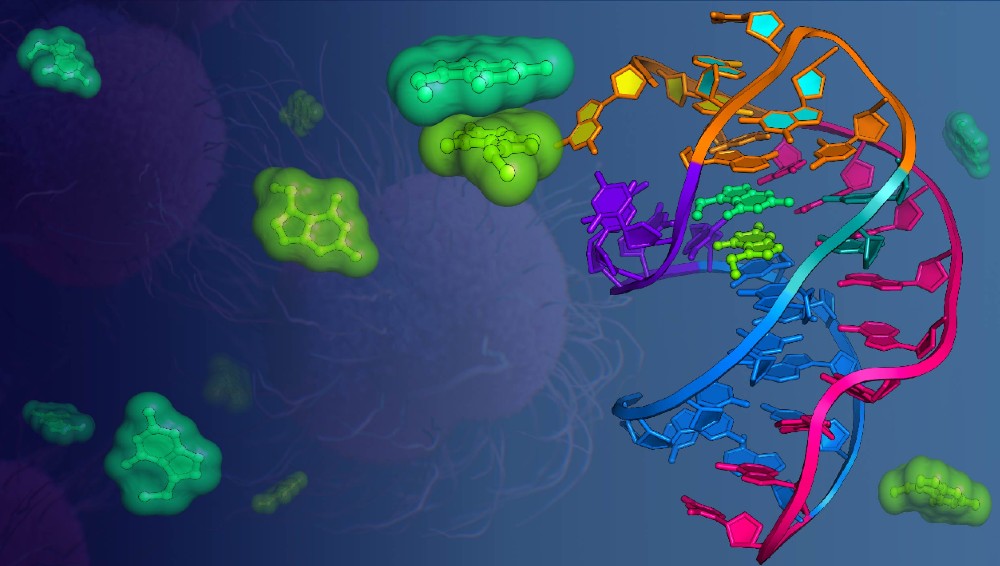

RNA biologists at the University of Rochester Medical Center (URMC) have discovered that RNA, the chemical cousin of DNA, can bind two metabolites (small molecules) at the same time in a single binding pocket, causing those molecules to interact. This discovery, published in Nature Communications this week, could lead to new antibacterial drugs while helping to fill a gap in the controversial “RNA world” theory, which suggests that RNA molecules enabled life to evolve on Earth 3.5 billion years ago.
Read More: In the Pocket: RNA Binding Discovery Supports ‘RNA World’ Theory of Early Life on EarthFormer Professor of the Biochemistry and Biophysics Department tapped to lead NIH
Wednesday, December 15, 2021
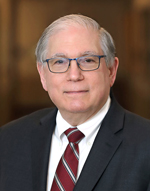
Larry Tabak, DDS, PhD
Dr. Larry Tabak, who was a past director of the center for oral biology, and a professor in the department of Biochemistry and Biophysics at the University of Rochester Medical Center has been appointed as interim director of the National Institutes of Health. Larry also served as Senior Associate Dean for Research at URMC. He was tapped to lead National Institute of Dental and Craniofacial Research in 2000, and has held other leadership posts at NIH.
Read More: Former Professor of the Biochemistry and Biophysics Department tapped to lead NIHChiang, Galardi and Schroeder Win the Sayeeda Zain Fall Travel Award
Friday, December 3, 2021
The Department is pleased to announce the winners of the Fall Sayeeda Zain Fall Travel Awards: Wesley Chiang, Justin Galardi and Griffin Schroeder.
The Sayeeda Zain Travel Award honors the distinguished career and charitable life of Dr. Sayeeda Zain. The award is given in recognition of research excellence to support expenses associated with attendance at a scientific conference or corporate internship to gain practical experience. The next round of Sayeeda Zain Travel Awards will be offered in Spring 2022.

Wesley Chiang

Justin Galardi

Griffin Schroeder
Thank you to all those who applied and congratulations to Wesley, Justin and Griffin!
RNA Presentation Contest: "Convince us why your favorite RNA or RNA-binding protein is worthy of our admiration" - January 2022
Friday, December 3, 2021
The UR Center for RNA Biology is running an RNA presentation contest, sponsored by the RNA Society and Lexogen, for graduate students, postdocs, and lab technicians on the topic: “Convince us why your favorite RNA or RNA-binding protein is worthy of our admiration”
Who is eligible: Any University of Rochester graduate student, postdoc, or lab technician with an interest in RNA biology (No need to be an RNA biologist. Previous contest winners also welcome to apply.)
Entry rules: Contestants for oral presentations will be chosen based on the scientific merit of their abstract (500-word max, excluding title, including references). To be considered for the oral competition, abstracts conforming to the rules, detailed below, must be submitted by 12pm on January 3rd.
Prizes: Three prizes of a one-year membership in the RNA Society plus $300 will be given to each of the three top oral presenters. Those who are already RNA Society members will be given membership for the following year. The prize funds should be used toward attending a research meeting.
Details: Contestants for oral presentation will be selected by an anonymous panel of faculty judges based on the scientific merit of their submission (500 words or fewer). In addition to the ~500-word description, please include your name, department, lab, status, year(s) at the UR, and if you were or are supported by a fellowship.
Those selected for the oral competition will give a 2-min intro of themselves, and an 8-minute science talk about their favorite RNA or RNA-binding protein followed by a 3-min Q&A session. Presentations will January 12th and 26th during the usual Department of Biochemistry & Biophysics Seminar Series on Wednesdays at 2pm (virtual or in-person TBD). Applicants and contestants should plan to be present for both January dates. Winners will be determined by the judges based on the quality of their presentations and their ability to address questions during the Q&A session.
Email submissions by 12pm on January 3rd to elizabeth_leverenz@urmc.rochester.edu.
Oral contestants will be notified by January 5th.
View the flyer
Congratulations Dr. Bryan!
Friday, November 12, 2021
 Michael Bryan successfully defended his thesis titled “Integrated Photonics for Point-of-Care Diagnostics“ on Friday, November 12th.
Michael Bryan successfully defended his thesis titled “Integrated Photonics for Point-of-Care Diagnostics“ on Friday, November 12th.
He is a graduate student in Dr. Ben Miller’s lab.
Biochemistry Alumni Gloria Culver, Dean of the School of Arts and Sciences, wins University of Rochester Medical Center’s Alumni Achievement Award
Tuesday, October 19, 2021
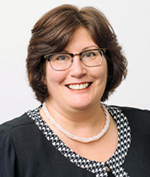 Dr. Gloria Culver, Ph.D., who is Dean of the University of Rochester’s School of Arts and Sciences, and is also a graduate of the Biochemistry Ph.D. Program at the University of Rochester Medical Center, was recently awarded the URMC 2021 Alumni Achievement Award. Dr. Culver, performed her thesis research with Professor Eric Phizicky in the Department of Biochemistry (now the Department of Biochemistry and Biophysics), graduating in 1995. She did postdoctoral research with Dr. Harry Noller at the University of California, Santa Cruz, then took a tenure-track faculty position at the University of Iowa, as an Assistant Professor of Biochemistry, Department of Biochemistry, Biophysics and Molecular Biology.
Dr. Gloria Culver, Ph.D., who is Dean of the University of Rochester’s School of Arts and Sciences, and is also a graduate of the Biochemistry Ph.D. Program at the University of Rochester Medical Center, was recently awarded the URMC 2021 Alumni Achievement Award. Dr. Culver, performed her thesis research with Professor Eric Phizicky in the Department of Biochemistry (now the Department of Biochemistry and Biophysics), graduating in 1995. She did postdoctoral research with Dr. Harry Noller at the University of California, Santa Cruz, then took a tenure-track faculty position at the University of Iowa, as an Assistant Professor of Biochemistry, Department of Biochemistry, Biophysics and Molecular Biology.
In 2007 she was recruited to the University of Rochester as Associate Professor in the Department of Biology, where she eventually was promoted to Professor (2009) and Chair (2010). She was appointed Dean of the School of Arts and Sciences in 2015. Culver received her BA in biology from Ithaca College in 1988.
The award was presented at the annual Dean’s Circle Alumni Council Awards Ceremony, September 30th, by Dr. Mark Taubman, Dean of the School of Medicine and Dentistry and CEO of the University of Rochester Medical Center.
Congratulations Gloria!
New lizard facility in Department of Biochemistry and Biophysics
Thursday, October 14, 2021
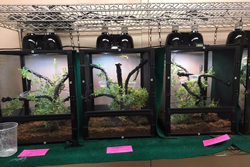 University of Rochester Medical Center’s first lizard facility began operation last week in the Medical Annex building. The facility was built and is operated under the direction Dr. Xin Li, and the the Li Lab within URMC’s Department of Biochemistry and Biophysics. The facility will work with Anolis carolinensis, also known as the Californian Anole or Green Anole, and will focus on studying the unique anatomy and molecular biology found within this species of lizard. The facility is currently being used in Dr. Li’s pilot course for undergraduate independent research entitled Lizard Research and will focus on breeding a population of Anoles for URMC along with running undergraduate research projects involving the lizards. This facility will take advantage of the recent discovery that CRISPR-Cas techniques can be used to modify Anole embryos, opening up the species as a model for genetic and biochemical experiments. Dr. Li hopes to expand this facility in the future and increase the use of Anolis carolinensis as a model organism in scientific research here at URMC.
University of Rochester Medical Center’s first lizard facility began operation last week in the Medical Annex building. The facility was built and is operated under the direction Dr. Xin Li, and the the Li Lab within URMC’s Department of Biochemistry and Biophysics. The facility will work with Anolis carolinensis, also known as the Californian Anole or Green Anole, and will focus on studying the unique anatomy and molecular biology found within this species of lizard. The facility is currently being used in Dr. Li’s pilot course for undergraduate independent research entitled Lizard Research and will focus on breeding a population of Anoles for URMC along with running undergraduate research projects involving the lizards. This facility will take advantage of the recent discovery that CRISPR-Cas techniques can be used to modify Anole embryos, opening up the species as a model for genetic and biochemical experiments. Dr. Li hopes to expand this facility in the future and increase the use of Anolis carolinensis as a model organism in scientific research here at URMC.
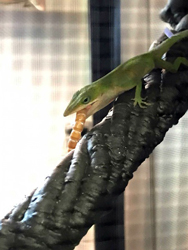

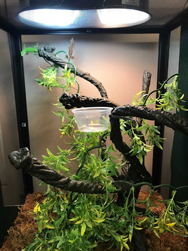
Yu Sun Defends PhD Thesis and wins Prestigious Award
Thursday, October 14, 2021
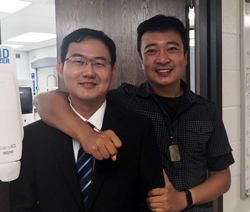 Yu Sun, a PhD student in Prof. Xin Li’s lab, who successfully defended his thesis September 2nd, was awarded the highly prestigious Chinese Government Award for graduate students studying abroad. The Chinese Government award recognizes exceptional achievement in academic accomplishment by Chinese students, and Yu was selected for this award among tens of thousands of other students. Only 500 students from all fields of study and all over the world are selected for the award each year. Yu was recognized for the advancements made in his thesis research, resulting in 12 research papers in top journals, including papers in Nature Cell Biology, Nature Communications, eLife, Biology of Reproduction, and Poultry Science.
Yu Sun, a PhD student in Prof. Xin Li’s lab, who successfully defended his thesis September 2nd, was awarded the highly prestigious Chinese Government Award for graduate students studying abroad. The Chinese Government award recognizes exceptional achievement in academic accomplishment by Chinese students, and Yu was selected for this award among tens of thousands of other students. Only 500 students from all fields of study and all over the world are selected for the award each year. Yu was recognized for the advancements made in his thesis research, resulting in 12 research papers in top journals, including papers in Nature Cell Biology, Nature Communications, eLife, Biology of Reproduction, and Poultry Science.
Congratulations Yu Sun!
Lynne Maquat spoke with WXXI: 'A wave of the future': local biologist explores what's next for mRNA technology
Wednesday, September 8, 2021
The recent approval of Pfizer and BioNTech’s COVID-19 vaccine by the U.S. Food and Drug Administration, has scientists enthusiastic about the future of the messenger RNA, or mRNA, technology used to produce the vaccine. For RNA biologists, in particular, the pandemic has become a catalyst for modern medicine. “It's a big step forward for mRNA-based therapeutics,” said UR Medicine’s director for centers for RNA biology, Dr. Lynne Maquat. “We've had a worldwide need. And the need has been met.”
Maquat defines mRNA as the messenger molecule between our DNA, and the proteins that our cells need to perform their duties. She says the COVID-19 vaccine produces a piece of the spike protein that surrounds the coronavirus and raises an immune response to it.
“Our immune system will attack the virus, because the spike protein is on the outside of the virus,” said Maquat.
She says the success of the Pfizer and Moderna vaccines is causing scientists to look at other illnesses that could benefit from the mRNA technology like dengue.
“There's lots of infectious diseases, especially in Third World countries that need to be addressed,” Maquat said.
UR Medicine infectious disease specialist Dr. Edward Walsh says existing vaccines can also benefit from messenger RNA.
“If an mRNA vaccine for the influenza vaccine could reach the kind of efficacy data, especially over a six-month period, we really only need to get protection for about six months through the flu season each year,” Walsh said.
He said the flu vaccine is roughly 60% effective, but mRNA technology could increase that...
“If we could get that very high degree of efficacy, it could really do a lot of public health good,” said Walsh.
Maquat said she and her team are already looking at how some cancers could be treated with messenger RNA technology
“Let's say you have a pancreatic cancer,” said Maquat, “you could have your tumor removed, and you can have it characterized for new proteins.”
The new discovered proteins in the tumor would allow scientists to develop an mRNA treatment to combat that protein.
“It's a type of personalized medicine,” said Maquat. "This is a wave of the future"
Read More: Lynne Maquat spoke with WXXI: 'A wave of the future': local biologist explores what's next for mRNA technologyBiochemistry and Molecular Biology Student Maddie Jensen Featured by Cold Spring Harbor Laboratory Blog
Friday, September 3, 2021
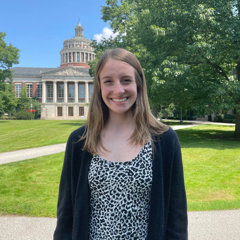
 Maddie Jensen, a BMB student in Eric Wagner’s lab at the University of Rochester Medical Center was recently featured as a ‘Visitor of the Week' in the Current Exchange, a Blog by the CSHL Meetings and Courses Program. Maddie attended the Eukaryotic mRNA Processing meeting where she was presenting a poster entitled "Identification and structural basis of a novel cellular inhibitor of the Integrator complex.” Maddie and the Wagner lab moved to the University in August 2021 from the University of Texas Medical Branch at Galveston, joining the Department of Biochemistry and Biophysics, The Wilmot Cancer Institute, and the RNA Center at the University of Rochester Medical Center. The article, which explored Maddie’s research, her journey as a scientist, and her experiences at the meeting, can be found here: https://currentexchange.cshl.edu/blog/2021/8/visitor-of-the-week-209.
Maddie Jensen, a BMB student in Eric Wagner’s lab at the University of Rochester Medical Center was recently featured as a ‘Visitor of the Week' in the Current Exchange, a Blog by the CSHL Meetings and Courses Program. Maddie attended the Eukaryotic mRNA Processing meeting where she was presenting a poster entitled "Identification and structural basis of a novel cellular inhibitor of the Integrator complex.” Maddie and the Wagner lab moved to the University in August 2021 from the University of Texas Medical Branch at Galveston, joining the Department of Biochemistry and Biophysics, The Wilmot Cancer Institute, and the RNA Center at the University of Rochester Medical Center. The article, which explored Maddie’s research, her journey as a scientist, and her experiences at the meeting, can be found here: https://currentexchange.cshl.edu/blog/2021/8/visitor-of-the-week-209.
Department of Biochemistry and Biophysics welcomes Eric Wagner to the University of Rochester
Friday, September 3, 2021
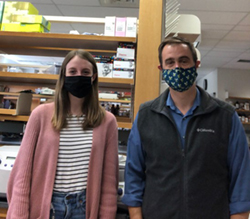 We are thrilled to officially announce the arrival of Professor Eric Wagner, Ph.D., to the University of Rochester Medical Center, with appointments in the Department of Biochemistry and Biophysics, the Wilmot Cancer Center and the RNA Center. Eric moved here from the University of Texas, Medical Branch at Galveston, where he was a Professor and Vice-Chair for Education in the Department of Biochemistry and Molecular Biology. Eric is originally from Buffalo, NY and an alumnus of the University of Rochester (BS ’97, Molecular Genetics). Eric’s research program focuses on the molecular mechanism of RNA processing as it relates to human disease. Specifically, his lab will continue their investigations into the Integrator Complex and alternative polyadenylation. Eric’s office and the lab is located on the ground floor of the Kornberg Medical Research building.
We are thrilled to officially announce the arrival of Professor Eric Wagner, Ph.D., to the University of Rochester Medical Center, with appointments in the Department of Biochemistry and Biophysics, the Wilmot Cancer Center and the RNA Center. Eric moved here from the University of Texas, Medical Branch at Galveston, where he was a Professor and Vice-Chair for Education in the Department of Biochemistry and Molecular Biology. Eric is originally from Buffalo, NY and an alumnus of the University of Rochester (BS ’97, Molecular Genetics). Eric’s research program focuses on the molecular mechanism of RNA processing as it relates to human disease. Specifically, his lab will continue their investigations into the Integrator Complex and alternative polyadenylation. Eric’s office and the lab is located on the ground floor of the Kornberg Medical Research building.
Two members of Eric’s lab also moved to Rochester, postdoctoral fellow Kai-Lieh (Frank) Huang, Ph.D., and Maddie Jensen (pictured), a second year student now in the Biochemistry Ph.D. program.
Please join us in welcoming Eric, Kai-Lieh and Maddie!
Jermaine Jenkins, Ph.D, Appointed as an Assistant Professor in Biochemistry and Biophysics
Tuesday, July 27, 2021
 Dr. Jermaine Jenkins, Ph.D. was appointed recently as an Assistant Professor in the Department of Biochemistry and Biophysics, in recognition of his numerous contributions to sponsored research projects that require his expertise in the area of structural biology and biophysics. Dr. Jenkins will continue serving as Director of the Structural Biology and Biophysics Facility, where he provides expertise and services for in-house, state-of-the-art instruments to determine macromolecular x-ray crystal structures, and to investigate protein-protein, protein-nucleic acid, or protein-small molecule interactions. Going forward, Dr. Jenkins will be instrumental in driving research efforts including cryo-electron microscopy at our institution.
Dr. Jermaine Jenkins, Ph.D. was appointed recently as an Assistant Professor in the Department of Biochemistry and Biophysics, in recognition of his numerous contributions to sponsored research projects that require his expertise in the area of structural biology and biophysics. Dr. Jenkins will continue serving as Director of the Structural Biology and Biophysics Facility, where he provides expertise and services for in-house, state-of-the-art instruments to determine macromolecular x-ray crystal structures, and to investigate protein-protein, protein-nucleic acid, or protein-small molecule interactions. Going forward, Dr. Jenkins will be instrumental in driving research efforts including cryo-electron microscopy at our institution.
Congratulations JJ!
Former Student Jerry Madukwe is appointed Editor-In-Chief of Trends in Pharmacological Sciences
Tuesday, July 27, 2021
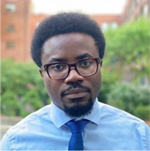 Jerry Madukwe, who received his Ph.D. in Biochemistry from the University of Rochester in 2018, has been hired as the Editor-in-chief of the Cell Press journal Trends In Pharmacological Sciences. Jerry received his BS in Biochemistry (magna cum laude) from Lee University in Tennessee, and doctorate in Biochemistry studying the role of cell signaling via tyrosine receptor kinases in cancer and cardiovascular disease. He completed a postdoctoral fellowship at Yale University in Pharmacological Biochemistry, then was a Washington Policy Fellow of the American Society for Pharmacology and Experimental Therapeutics, where he advocated for science funding and younger scientists at the US Capitol.
Jerry Madukwe, who received his Ph.D. in Biochemistry from the University of Rochester in 2018, has been hired as the Editor-in-chief of the Cell Press journal Trends In Pharmacological Sciences. Jerry received his BS in Biochemistry (magna cum laude) from Lee University in Tennessee, and doctorate in Biochemistry studying the role of cell signaling via tyrosine receptor kinases in cancer and cardiovascular disease. He completed a postdoctoral fellowship at Yale University in Pharmacological Biochemistry, then was a Washington Policy Fellow of the American Society for Pharmacology and Experimental Therapeutics, where he advocated for science funding and younger scientists at the US Capitol.
That's the Rochester Effect: Featuring Dr. Lynne Maquat. PhD
Friday, July 2, 2021
UR Graduate Women in Science (GWIS) 2021 Mentoring-Up Resolution Challenge CONTEST RESULTS
Monday, May 24, 2021
Congratulations, Mentoring-Up Resolution Challenge Winners!
Full-time UR grad students (gender-inclusive) in biomedical, biological, or chemical sciences took charge of their futures by setting and, through mentoring-up, achieving professional and personal goals for Spring 2021. Participants submitted their goals in a January write-up and progress reports on their professional goals in May. The anonymous faculty evaluation committee selected finalists to present on May 20th. All four presenters were selected to win $1500 ea. in technology-related (hardware, software, and/or peripherals) prizes. Of note, submissions for this contest were received from graduate students of 12 different programs!
Read More: UR Graduate Women in Science (GWIS) 2021 Mentoring-Up Resolution Challenge CONTEST RESULTSGraduate Women in Science Receives 2021 Best of Rochester Award
Tuesday, May 4, 2021
Graduate Women in Science has been selected for the 2021 Best of Rochester Award in the University category by the Rochester Award Program.
Each year, the Rochester Award Program identifies companies that we believe have achieved exceptional marketing success in their local community and business category. These are local companies that enhance the positive image of small business through service to their customers and our community. These exceptional companies help make the Rochester area a great place to live, work and play.
Various sources of information were gathered and analyzed to choose the winners in each category. The 2021 Rochester Award Program focuses on quality, not quantity. Winners are determined based on the information gathered both internally by the Rochester Award Program and data provided by third parties.
About Rochester Award Program
The Rochester Award Program is an annual awards program honoring the achievements and accomplishments of local businesses throughout the Rochester area. Recognition is given to those companies that have shown the ability to use their best practices and implemented programs to generate competitive advantages and long-term value.
The Rochester Award Program was established to recognize the best of local businesses in our community. Our organization works exclusively with local business owners, trade groups, professional associations and other business advertising and marketing groups. Our mission is to recognize the small business community's contributions to the U.S. economy.
Lynne Maquat Wins Warren Alpert Foundation Prize
Monday, May 3, 2021
Lynne Maquat, Ph.D., the founding director of the Center for RNA Biology at the University of Rochester, has been awarded the Warren Alpert Foundation Prize for her pivotal discoveries in the field of RNA biology. She shares the prize with fellow RNA biologist Joan Steitz, Ph.D., Sterling Professor of Molecular Biophysics and Biochemistry at Yale School of Medicine.
The award is given by the Warren Alpert Foundation in recognition of work that has improved the understanding, prevention, treatment or cure of human disease. The prize is administered by Harvard Medical School, and since its inception in 1987, 12 honorees have gone on to receive Nobel prizes.
George Q. Daley, dean of Harvard Medical School, said of Maquat and Steitz: "The discoveries made by the two award winners are stunning in their elegance and scope." Earlier this year, the pair won the 2021 Wolf Prize in Medicine for their work. They shared the Wolf Prize with a third RNA biologist, Adrian Krainer, Ph.D., of Cold Spring Harbor Laboratory.
RNA Makes its Mark
Maquat has studied RNA since she started her own laboratory in 1982. But until the development and approval of multiple mRNA COVID-19 vaccines in 2020, RNA wasn't on the public radar. Decades of research by Maquat and Steitz on how RNAs work and how they are involved in human disease helped set the stage for the rapid development of these vaccines, which are key to bringing the COVID pandemic under control.
Many are familiar with DNA, which contains the genetic instructions that make us who we are. But RNA is equally important in the process of gene expression:
- DNA lives in the nucleus of a cell and makes many types of RNA, including mRNA (messenger RNA).
- mRNA takes genetic instructions from DNA, travels out of the nucleus and delivers them to factories in our cells called ribosomes.
- Ribosomes use the instructions to create proteins.
- Proteins carry out myriad functions throughout the body, including ferrying nutrients around, helping with chemical reactions and protecting us from disease.
Many disorders result from problems with our DNA, but over the past several decades Maquat, Steitz and other scientists revealed that mRNA plays a role in a multitude of diseases, too. Cystic fibrosis, fragile X syndrome, Duchene muscular dystrophy and a long list of other inherited and acquired diseases result from defective mRNAs.
"Scientists used to think that gene regulation was all about DNA, and that RNA didn't influence gene expression, the production of proteins or the development of disease," said Maquat, the J. Lowell Orbison Endowed Chair and Professor of Biochemistry and Biophysics, Oncology and Pediatrics at the University of Rochester School of Medicine and Dentistry. "We now know that a very complicated network exists in our cells to regulate how, when and where our mRNAs are produced. This knowledge has opened the door to using RNA as both a treatment target and a tool to develop new therapies."
OyaGen announces a license agreement to develop SARS CoV-2 inhibitor
Tuesday, April 20, 2021
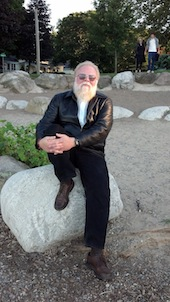
Dr. Harold Smith
OyaGen, a start-up biotech company founded by Harold Smith, Ph.D., Professor of Biochemistry and Biophysics, announced on Monday a licensing agreement with Tonix Pharmaceuticals to develop a drug that was found to be an effective agent against the virus that causes COVID-19. The drug, TNX-3500, was found to block SARS-CoV-2 with an efficacy significantly greater than the current front-line anti-viral used in the clinic, remdesivir. Harold Smith, PhD, Chief Executive Officer and founder of OyaGen, remarked that "We're delighted to partner with Tonix as a clinical stage company on the development of TNX-3500 as we believe Tonix to be ideally capable to bring this drug lead to the clinic in rapid fashion and position it for worldwide commercialization." Tonix Pharmaceuticals Holding Corp. (Nasdaq: TNXP), a clinical-stage biopharmaceutical company, is located in Chatham, NJ. For more information please contact Dr. Smith at Harold.smith@rochester.edu
Hilf Article in Analytical Biochemistry Read Over 2000 Times
Friday, March 26, 2021
Paul Boutz lands first NIH R01 at Rochester
Tuesday, March 2, 2021
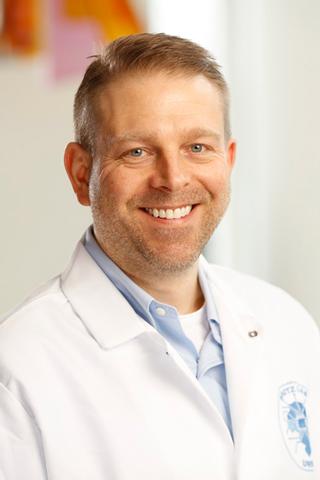
Paul Boutz, PhD
Congratulations to Paul Boutz, who received official word that his first NIH R01 application as a faculty member in the Department of Biochemistry and Biophysics at the URMC was funded. Dr. Boutz's project is entitled "Genomics-based approaches to understanding mechanistic alterations of spliceosome function in disease states" and earned a 12th percentile ranking, meaning the grant application was rated as better than 88% of all other grant applications. The goal of this project is to model genetic perturbations found in cancer and developmental disorders in order to understand how they alter spliceosome function. Conventional and novel RNA sequencing methods will be used to generate genome-wide maps of splicing and RNA-protein interactions that will enable the training of deep-learning neural networks, with the goal of deciphering the codes that confer gene-specific sensitivity to disease-causing mutations.
Congratulations Paul!
Wedekind lab research featured on the cover of JBC “The Year in JBC: 2020" issue
Friday, February 12, 2021
Congratulations to Shashank Chavali, Dr. Sachitanand Mali, Dr. Jermaine Jenkins, Dr. Rudi Fasan, and Dr. Joseph Wedekind for being featured on the cover of JBC "The Year in JBC: 2020" issue. Their recent research article, published in the Journal of Biological Chemistry (JBC) December 4, 2020 issue, titled "Co-crystal structures of HIV TAR RNA bound to lab-evolved proteins show key roles for arginine relevant to the design of cyclic peptide TAR inhibitors" has been selected as the representative 'RNA' article for 2020 retrospective collection called "The Year in JBC: 2020."
The cover art below, shows a collage of fluorescence complementation experiments between the [4Fe-4S]-transferring NFU1 and potential partners (performed by Roland et al.), crystal structure overlays of HIV-1 TAR RNA with lab-evolved TAR-binding proteins (reported by Chavali et al.), nonmelanized yeast cells (explored by Chrissian et al.) and a cryo-EM structure of STEAP1, now thought to function as a ferric reductase in heterotrimer form (reported by Oosterheert and Gros). Artwork created by EJ Marklin.
Read More: Wedekind lab research featured on the cover of JBC "The Year in JBC: 2020" issue
Lynne Maquat Awarded 2021 Wolf Prize in Medicine
Tuesday, February 9, 2021
Lynne E. Maquat, Ph.D., the founding director of the Center for RNA Biology at the University of Rochester, was honored with the 2021 Wolf Prize in Medicine. The acclaimed international award is given to outstanding scientists from around the world for achievements that benefit mankind.
Maquat was selected for "fundamental discoveries in RNA biology that have the potential to better human lives." She has spent her career deciphering the many roles that RNA plays in sickness and in health, and is well known for her discovery of nonsense-mediated mRNA decay or NMD. One of the major surveillance systems in the body, NMD protects against mistakes in gene expression that lead to disease. Maquat's lab also revealed that NMD helps our cells adjust to changes in development and in their environment, and more rapidly respond to certain stimuli.
Maquat shares the award with Joan Steitz, Ph.D., Sterling Professor of Molecular Biophysics and Biochemistry at Yale School of Medicine and Adrian Krainer, Ph.D., St. Giles Foundation Professor and Cancer Center Deputy Director of Research at Cold Spring Harbor Laboratory. Steitz and Krainer were also honored for discoveries in RNA biology.
The Wolf Foundation, which celebrates exceptional achievements in the sciences and the arts, is based in Israel, where Maquat's quest to unravel the intricacies of NMD began. In 1980 she traveled to Jerusalem to retrieve bone marrow samples from four children suffering from thalassemia major, the most severe form of the inherited blood disorder thalassemia. Maquat wanted to learn why the children's marrow contained no beta-globin protein, which is necessary for the oxygen-carrying function of red blood cells. Her 1981 breakthrough manuscript, "Unstable beta-globin mRNA in mRNA-deficient beta0 thalassemia," published in Cell, was the first to reveal the role of NMD in human cells and how it can lead to disease.
"Lynne's work on nonsense-mediated mRNA decay is the bedrock of an ever-growing body of research on how mRNAs are monitored and regulated," said Mark B. Taubman, M.D., dean of the University of Rochester School of Medicine and Dentistry. "Her dedication to her science and to the field of RNA biology has opened the door to the development of RNA-based therapeutics for a wide range of disorders that you can't reach with conventional drugs. We're thrilled that her contributions are being recognized with this prestigious award."
RNA secured its place in the public eye in 2020 with the development and approval of multiple mRNA COVID-19 vaccines. Years of research by Maquat, Steitz and Krainer helped set the stage for the rapid development of these vaccines.
The J. Lowell Orbison Endowed Chair and Professor in the Department of Biochemistry and Biophysics at the University of Rochester School of Medicine and Dentistry, Maquat is the recipient of several other significant honors, including:
Winners of the Wolf Prize are selected annually by an international jury committee of the Wolf Foundation; prizes are awarded regardless of religion, gender, race, geographical region, or political view. The official announcement of this year's prize by the President of the State of Israel, Reuven Rivlin, was made on February 9, 2021.
UR Center for RNA Biology RNA Presentation Contest Results
Tuesday, February 2, 2021
Thank you to those who participated in and/or viewed the UR Center for RNA Biology's RNA Presentations on Jan 6th, 13th, and 27th, sponsored by the RNA Society and Lexogen. The judging committee was impressed with the quality of the presentations given on all three dates, making final decisions difficult.
All nine of the graduate student, postdoc, and technician presenters, chosen based on their quality of their abstract, will be receiving a one-year membership to the RNA Society. Of these, four who were chosen based on the quality of their presentation will be awarded $375 each to be used toward the attendance of an RNA-centric meeting, in person or virtually.
The four to be awarded a one-year membership in the RNA Society and $375, in alphabetical order, are:
Kamel Awayda (presented Jan 6th )
Technician, Mitch O'Connell Lab
"Characterization of THUMP Domain-Containing Protein 1, and Putative Modulator of RNA Modification"
Chen Bao (presented Jan 13th)
Biochemistry Grad Student, Dmitri Ermolenko Lab
"mRNA Stem-Loops Can Induce Translational Pause through Two Pathways"
Xavier Rambout, PhD (presented Jan 27th)
Postdoc, Lynne Maquat Lab
"Transcriptional Coactivator PGC-1α Contains a Novel CBP80-Binding Motif that Orchestrates Efficient Target-Gene Expression"
Arica VanderWal (presented Jan 13th)
Biochemistry Grad Student, Mitch O'Connell Lab
"The Role of Csx28 in CRISPR-Cas13b Anti-Bacteriophage Defense"
The remaining to be awarded a one-year membership in the RNA Society, in alphabetical order, are:
Lily Cisco (presented Jan 6th )
Pharm-Phys Grad Student, John Lueck Lab
"Testing Therapeutic Intervention for Myotonic Dystrophy Type 1 in a Novel Mouse Model"
Xueyang He (presented Jan 6th )
Biophysics Grad Student, Paul Boutz Lab
"A Novel Method to Capture and Sequence Intron Lariats"
Shon Koren (presented Jan 6th )
Technician, Gail Johnson Lab
"Tau-Ribosome-tRNA Associations Underlie Common Features of Dys sincening Protein Synthesis in Dementia"
Sean Lindley (presented Jan 13th )
Biology Grad Student, Doug Anderson Lab
"StitchR: Ribozyme-Mediated RNA Trans-Splicing and Expression in Mammalian Cells"
Debanjana Maji (presented Jan 27th )
Biophysics Grad Student, Clara Kielkopf Lab
"Representative Cancer-Relevant U2AF2 Mutations Alter RNA Interactions and Splicing"
Beneath the Surface of Fragile X Syndrome: Study Sheds Light on What’s Happening in Nerve Cells
Monday, January 25, 2021
A new study shows that many abnormalities in fragile X syndrome cells are related to glitches with one of the body's major quality control systems. Published in Nature Cell Biology, the research provides fresh insight into the molecular mechanisms of the disorder and a pathway to search for potential treatments.
Fragile X syndrome occurs when individuals don't make the fragile X protein known as FMRP, which is needed for normal brain development. Currently, little is known about how the loss of this crucial protein leads to the intellectual disability and severe learning problems characteristic of the disease.
Rochester researchers found that many irregularities in cells that lack FMRP are due to misregulated nonsense-mediated mRNA decay, or NMD. Discovered by RNA biologist Lynne E. Maquat, Ph.D., NMD is like a molecular guide that helps our cells make smart decisions that (in most cases) improve cellular function and contribute to good health. For example, NMD helps our cells adjust to changes in development and in their environment, and more rapidly respond to certain stimuli.
Through a series of cellular analyses, Maquat's team discovered that NMD influences a wide range of genes throughout the brain, including genes that govern motor control and cognitive processes related to attention, learning and language. They also found that when FMRP is absent from cells, as it is in people with fragile X syndrome, nonsense-mediated mRNA decay shifts into overdrive.
New Research Funding Initiative to Support Young Investigators
Friday, January 15, 2021
Thanks to a partnership between pediatric researchers and the GCH Advancement division, a new funding initiative will seek to provide $25,000 -- matched with grant funds -- to support individual young investigators who are undertaking pediatric research.
These young investigators would be tenure-track assistant professors or post-doctoral fellows who already have a PhD degree and are on the path to obtain a tenure track position. This type of "seed" funding will be critical for fostering the careers of young researchers at URMC and could potentially pay dividends for institutional growth in the long-term, according Tom Mariani, PhD, professor of Neonatology and director of research for the Department of Pediatrics.
"In addition to funding discovery and innovation which could potentially save millions of lives, the career development of one investigator can be leveraged many times over to merit additional external funding, creation of new labs, and stimulate economic growth in the Rochester community."
Alan Wood, owner of the Realty company RE/Max Plus and supporter of GCH, and Lynne Maquat, PhD, endowed chair and professor in the Departments of Biochemistry and Biophysics, Oncology, and Pediatrics, developing this funding idea after Wood and his children visited Maquat's Fragile X Syndrome lab this Fall. Fragile X Syndrome is the most common single-gene cause of autism and intellectual disability, and Wood's family got a thorough education on the scope of Maquat's work, which is examining disease-causing mutations in children, and what those mutations do to gene expression via RNA production.
"My children loved getting first-hand experience touring the lab and seeing real-world visualizations of the work Maquat and her team are doing. Wearing lab coats and gloves, they isolated genetic material from bananas, which turn out to have more genetic material than us humans," said Wood.
Wood will be leading the effort to develop the program and secure funding. Donors who sponsor a young investigator will be able to establish a relationship to learn more about their research as it evolves.
"We have several talented young researchers in the Department of Pediatrics," said Maquat, "providing early support for their career is a long-term goal. The results won't be immediate, but over time, this support will build the foundation for discovery that will improve kids' lives."
Alan Grossfield Featured in Biophysical Society Profile
Monday, January 11, 2021
Biochemistry and Biophysics Professor Alan Grossfield was recently featured in a two-page profile piece in the January 2021 Biophysical Society Bulletin. The article details how Dr. Grossfield developed an interest in science and progress from an undergraduate biology major to ultimately making a career in computational studies of biological systems. The entire article can be found here: https://biophysics.cld.bz/Biophysical-Society-Bulletin-January-2021/4/#zoom=z
The Department of Biochemistry and Biophysics hosts its 1st Annual Holiday Decorating Door Contest
Tuesday, December 22, 2020
The Department of Biochemistry and Biophysics recently held its 1st Annual Holiday Decorating Door contest. With only two labs participating in this year's contest, both labs were declared as winners. Congratulations to the Boutz Lab and the O'Connell lab!
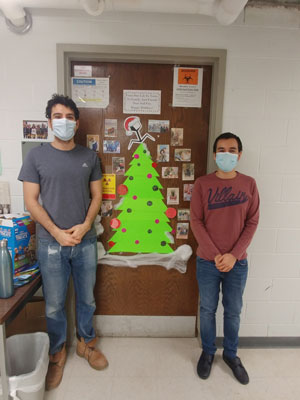
O'Connell lab door
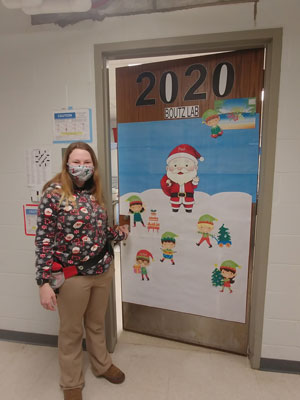
Boutz lab door
Department of Biochemistry and Biophysics Annual Toy Drive
Friday, December 18, 2020
The Department of Biochemistry and Biophysics held its annual toy drive this season to collect toys and items for the Golisano Children's Hospital. Dr. Alan Grossfield delivered a cart full of goodies to the Golisano Children's hospital on Tuesday, December 15th. The gifts are given to the children in the hospital during the holiday season. Any remaining gifts are used to support the needs of the children and playrooms throughout the year.
COVID-19 vaccine: What’s RNA research got to do with it?
Monday, December 14, 2020
The US Food and Drug Administration recently approved emergency use authorization for a COVID-19 vaccine developed by Pfizer and the German pharmaceutical company BioNTech.
The vaccine made history not only because it reported a 95 percent efficacy rate at preventing COVID-19 in clinical trials, but because it is the first vaccine ever approved by the FDA for human use that is based on RNA technology.
"The development of RNA vaccines is a great boon to the future of treating infectious diseases," says Lynne Maquat, the J. Lowell Orbison Distinguished Service Alumni Professor in biochemistry and biophysics, oncology, and pediatrics at Rochester and the director of Rochester's Center for RNA Biology.
COVID-19, short for "coronavirus disease 2019," is caused by the novel coronavirus SARS-CoV-2. Like many other viruses, SARS-CoV-2 is an RNA virus. This means that, unlike in humans and other mammals, the genetic material for SARS-CoV-2 is encoded in ribonucleic acid (RNA). The viral RNA is sneaky: its features cause the protein synthesis machinery in humans to mistake it for RNA produced by our own DNA.
For that reason, several of the leading COVID-19 vaccines and treatments are based on RNA technology.
A contingent of researchers at the University of Rochester study the RNA of viruses to better understand how RNAs work and how they are involved in diseases. This RNA research provides an important foundation for developing vaccines and other drugs and therapeutics to disrupt the virus and stop infections.
"Understanding RNA structure and function helps us understand how to throw a therapeutic wrench into what the COVID-19 RNA does—make new virus that can infect more of our cells and also the cells of other human beings," Maquat says.
In the past few decades, as scientists came to realize that genetic material is largely regulated by the RNA it encodes, that most of our DNA produces RNA, and that RNA is not only a target but also a tool for disease therapies, "the RNA research world has exploded," Maquat says. "The University of Rochester understood this."
In 2007, Maquat founded The Center for RNA Biology as a means of conducting interdisciplinary research in the function, structure, and processing of RNAs. The Center involves researchers from both the River Campus and the Medical Center, combining expertise in biology, chemistry, engineering, neurology, and pharmacology.
Daniel Steiner Wins The Sayeeda Zain Fall 2020 Travel Award
Friday, December 4, 2020
Congratulations to Dan Steiner for winning a Sayeeda Zain Fall travel award. Dan is planning to attend the SPIE Photonics West meeting, to be held at the Moscone Center, San Francisco, California, March 6-11, 2021, He states "I am excited to represent our department and present my work in San Francisco (virtually or otherwise) . Networking and reaching out to labs and PIs at this conference will help me learn more about the entrepreneurial side of science and how to develop my career after I defend." The Sayeeda Zain Travel Award honors the distinguished career and charitable life of Dr. Sayeeda Zain. The award is given in recognition of research excellence to support expenses associated with attendance at a scientific conference or corporate internship to gain practical experience. Dan Steiner is a Biophysics graduate student studying in Dr. Ben Miller's lab
Special Department of Microbiology and Immunology Seminar – Dr. Malika Grayson – November 9th at NOON
Friday, October 23, 2020
How do you make an impact when you are the only person in the room that looks like you? We hear the terms diversity and inclusion but forget that the term representation should be a reflection of diversity and inclusion combined. This isn't always the case. Dr. Grayson discusses her views on what it means to increase diversity and representation as an Individual Contributor. Learn more about her journey as the 2nd Black Woman to graduate with a PhD in Mechanical Engineering from her graduate institution. Hear about her current work as both an engineer, a STEM Advocate, and her most recent success as author of 'HOODED: A Black Girl's Guide to the PhD' where she highlights her time and lessons learned during her PhD Program.
Nazish Jeffery, Biochemistry Ph.D. Candidate Pens Guest Column in the Democrat & Chronicle on Scientists’ Need to Communicate Clearly to the Public
Monday, October 19, 2020

Nazish Jeffery
Graduate student Nazish Jeffery published an editorial-style column entitled "Scientists Must Communicate More Clearly" which appeared on the Opinion page of the Sunday, October 4th edition of the Democrat and Chronicle. Ms. Jeffery argues that scientist have a civic duty to clearly inform and educate the public and public officials with regard to the results of biomedical research. She states "As scientists, our civic duty becomes twofold. Not only must we better our understanding of the world through research, we also need to use our training and expertise to help inform who govern so they can craft policies that are scientifically sound." Ms. Jeffery will be taking a brief hiatus from her laboratory research in Michael Bulger's lab to remotely participate in an internship with the American Institute of Biological Sciences in Washington DC, where she will focus on science and public policy.
Cool Technology Allows for Better Views of Cancerous Blood Cells in Quest for New Treatment
Tuesday, September 15, 2020
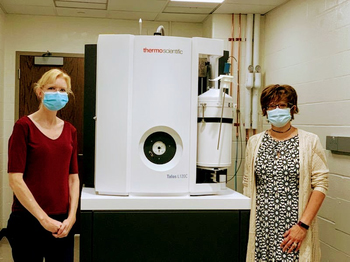
Clara Kielkopf, Ph.D., left, and Laura Calvi, M.D., stand by the University's new cryo-microscope
With the recent acquisition of Nobel Prize-winning technology and two new grants, Wilmot Cancer Institute researchers are streamlining their investigations into a malignant blood disease known as MDS, working toward discovering targeted therapies.
Laura Calvi, M.D., and Clara Kielkopf, Ph.D., are leading collaborative teams that will be using a device at the University of Rochester Medical Center — a cryo-electron microscope — that has ushered in a new era in biochemistry. The microscope allows scientists to see 3D snapshots and more details of living molecules than ever before, down to near-atomic resolution, to understand disease and uncover new ways to design drugs. The developers of the technology were awarded the Nobel Prize in Chemistry 2017.
Calvi and Kielkopf each received Edward P. Evans Foundation awards totaling $1.2 million for this project. Evans grants go to scientists seeking a cure for myelodysplastic syndromes (MDS), which originates in the bone marrow and disrupts healthy blood cell formation. MDS often leads to leukemia.
The Kielkopf lab will use the cryo-electron microscope to obtain 3D views of recurrent MDS mutations as guides for targeting molecular therapies. The modern microscope is the first of its kind in the Rochester region, Kielkopf said, and will be accessible to all UR researchers through the Electron Microscopy Shared Resource Laboratory. She is a professor of Biochemistry and Biophysics in the Center for RNA Biology.
David Mathews, MD, PhD installed as first Lynne Maquat Distinguished Professor in RNA Biology
Tuesday, September 15, 2020
We are thrilled to announce that Professor David Mathews, MD, PhD, was honored at this year's School of Medicine Opening Convocation by being installed as the first Lynne Maquat Distinguished Professor in RNA Biology in the School of Medicine and Dentistry. The professorship was awarded by Dr. Mark Taubman, Dean of the School of Medicine and CEO of the University of Rochester Medical Center. The Convocation was held virtually this year and can be viewed at the link below.
Congratulations to Professor Mathews!
GDSC Predoc Adrián Moisés Molina Vargas Passes his Qualifying Exam!
Thursday, September 3, 2020
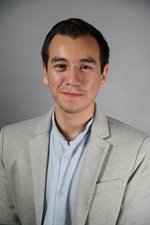
Adrian Vargas, a pre-doctoral student in the laboratory of Dr. Mitch O'Connell successfully defended his Qualifying Exam proposal entitled "Understanding guide-RNA design rules for efficient and specific Cas13 RNA-binding in human cells". Working on the recently described Type VI CRISPR-Cas system Adrian is investigating unique properties of the effector nuclease Cas13. His work has designed new approaches that will shed light on the mechanisms that govern optimal Cas13 RNA-binding, and potentially enhance its usability in human cells. Pursuing such goals not only will help complete our understanding of the gRNA requirements for on-target efficiency but more importantly, it will assist in uncovering what gRNA features contribute to off-target effects that could hinder the use of Cas13 as a specific RNA-targeting tool. The results will develop a more holistic biophysical model of Cas13 binding and cleavage activity. Congratulations Adrian on a job well done! You can read Adrian's thesis abstract below.
Title: Understanding guide-RNA design rules for efficient and specific Cas13 RNA-binding in human cells.
Abstract: Prokaryotic adaptive immune systems utilize Clustered Regularly Interspaced Short Palindromic Repeats (CRISPRs) and CRISPR Associated (Cas) proteins to target and cleave foreign genetic elements in an RNA-guided manner. The recently described Type VI CRISPR-Cas system contains a single effector ribonuclease, Cas13, that binds and processes a guide-RNA (gRNA), forming an RNA-guided RNA-targeting protein complex. Cas13 has been successfully engineered for potent RNA-knockdown in eukaryotic cells with minimal off-target effects, and other exciting applications described to date include utilizing a nuclease-dead Cas13 (dCas13) as a programmable RNA-binding protein for RNA imaging, RNA-splicing, RNA-detection or RNA-editing applications, among others.
However, the principles of guide-RNA selection for efficient and specific Cas13:gRNA RNA binding remain elusive. Previous work indicates that gRNA choice is important because not all gRNAs yield a robust RNA-targeting, and it is likely that there are different gRNA requirements for RNA-binding compared to RNA-cleavage applications. Furthermore, no predictive models exist for guide-RNA binding efficiency and specificity for Cas13 because no systematic screens have been carried out. Given that no transcriptome-wide measurements of Cas13-binding specificity have been attempted so far, it is unknown what the Cas13 off-target landscape is for human cells. Addressing this knowledge gap and quantitatively understanding the differences between binding and cleavage specificities is integral to the development of specific Cas13 RNA-binding applications.
In this project, I propose a series of approaches that will shed light on the mechanisms that govern optimal Cas13 RNA-binding, and potentially enhance its usability in human cells. Pursuing such goals not only will help complete our understanding of the gRNA requirements for on-target efficiency but more importantly, it will assist us in uncovering what gRNA features contribute to off-target effects that could hinder the use of Cas13 as a specific RNA-targeting tool, particularly for RNA-binding applications. In addition, these findings will be complemented by kinetic studies to dissect the biochemical components underlying Cas13 binding specificity to develop a more holistic biophysical model of Cas13 binding and cleavage activity. Consequently, we will generate a predictive model for Cas13 guide-RNA targeting specificity which will be complied into a comprehensive gRNA design tool tailored to different RNA-targeting applications for any RNA of choice. Finally, using the knowledge we generate and existing structural information, we will attempt to rationally engineer Cas13 and gRNA structure to enhance binding (and cleavage) specificities. Taken together, this work will bolster efforts to develop a range of RNA-targeting tools that can be readily used as research tools to address knowledge gaps in RNA biology, and as potential therapeutics.
RNA Essay Contest Results and Congratulations
Wednesday, August 26, 2020
The UR Center for RNA Biology offered an exercise during the time when COVID-19 became a sufficient threat to largely shut-down our research enterprise. We're pleased to announce the winners of the UR's Center for RNA Biology Essay Contest on "The role of RNA research in community health". These awards are sponsored by a grant from the RNA Society & Lexogen to the UR Center for RNA Biology, and funds from UR RNA Structure & Function Cluster.
Our Gold prize (~$1,000 value) award goes to Sydney Simpson, an Immunology, Microbiology & Virology graduate student in Steve Dewhurst's lab in the Department of Microbiology & Immunology, for her essay: "Nucleoside Analog Inhibitors: Timeless & Timely Beacons of Hope".
The Silver Prize (~$250 value) award goes to Omar Hedaya, a Biochemistry & Molecular Biology graduate student in Peng Yao's lab in the Department of Medicine/Department of Biochemistry & Biophysics, for his essay: "Know the Fundamentals when Seeking the Future".
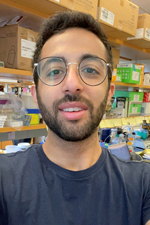
Omar Hedaya
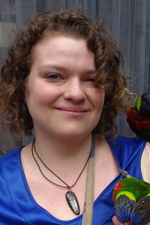
Sydney Simpson
Both awardees have become members of the RNA Society and will use their winnings toward technology needs for the upcoming semester.
The RNA Society now features our contest results, including the winning essays, in its latest RNA Salon update: https://www.rnasociety.org/featured-salons, see bullet #3.
We would like to acknowledge Honorable Mentions for the following applicants:
- Sai Shashank Chavali -- Graduate student; Biophysics, Structural & Computational Biology; Wedekind Lab
- Lily Cisco -- Graduate student; Cellular and Molecular Pharmacology & Physiology; Lueck Lab
- Gabrielle Kosoy -- Graduate student; Biophysics, Structural & Computational Biology; Miller Lab
- Ashwin Kumar -- Graduate student; Biophysics, Structural & Computational Biology; Topham Lab
- Li Xie -- Graduate student; Genetics, Development & Stem Cells; Pröschel Lab
We thank all who participated -- and our judges, too!
Kielkopf Lab Awarded EvansMDS Research Grant
Thursday, July 16, 2020
Prof. Clara Kielkopf has been awarded an EvansMDS research grant to use the new, state-of-the-art cryo-electron microscope at the U of R Medical Center EM facility. The Kielkopf group will use this revolutionary technique to study 3D structures of mutant U2AF1-splicing complexes in human malignancies. The title of the EvansMDS grant is: "Cryo-Electron Microscopy Structures of Mutant U2AF1-Containing Ribonucleoproteins Associated with Myelodysplastic Syndromes". This grant was made possible by our new Talos cryo-EM.
New article discusses biological implications of the intrinsic compactness of mRNAs
Monday, July 6, 2020
The Mathews and Ermolenko labs have recently showed that RNAs universally fold into secondary structures with short end-to-end distances. In this new article, possible roles of the inherent mRNA compactness in translation and mRNA decay are reviewed.
Cancer Investigators Pivot, Take on Coronavirus Research
Friday, June 12, 2020
While other cancer researchers had to temporarily close their labs in March due to the COVID-19 pandemic, Isaac Harris, Ph.D., and Josh Munger, Ph.D., shifted their focus to the contagion that has reshaped the world.
Using their specialized knowledge of viruses and genomics technology at the Wilmot Cancer Institute, the duo is searching for new and existing, U.S Food and Drug Administration-approved medications that could block the coronavirus.
They've tested 624 drugs on thousands of human lung cells infected with a strain of the coronavirus to see if the drugs have any impact. So far, they've discovered 15 potential compounds that appear to have anti-viral activity. Their criteria for a "hit" is for the drug to block 50 percent of virus-induced cell death. The team is validating the 15 drugs and trying to understand the mechanisms behind their potential anti-viral activity, Harris said.
This type of research is known as high-throughput drug screening -- a process that plays a big role in drug discovery in modern medicine. But instead of finding a new drug, here, investigators are looking to repurpose existing, available drugs for treatment of the coronavirus. This involves using automated, robotic equipment to match drug candidates with cellular events that occur during disease transformation. This form of drug-screening is often less expensive and faster than developing treatments from scratch.
Ermolenko lab uncovers a new mechanism causing ribosome pausing
Wednesday, June 10, 2020

Chen Bao
In a new paper just published in the journal eLife, the Ermolenko lab in collaboration with the Grigorieff lab at HHMI uncovers the underlying mechanism by which secondary structure in mRNA causes ribosome pausing. Specifically they show that mRNA stem-loops can cause translation pausing by inhibiting binding of tRNAs to the A site of the ribosome. The lead author on the work is Chen Bao, a Biochemistry graduate student. The work was funded by NIH.
Biophysics Students Win Hooker Fellowships
Tuesday, June 9, 2020
Congratulations to Chapin Cavender and Michael Bryan for winning University of Rochester's Hooker Fellowships, recognizing their achievements in their thesis research. Chapin and Michael are Biophysics students working in the labs of David Mathews and Ben Miller, respectively.
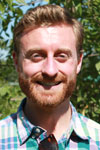
Michael Bryan

Chapin Cavender
This week’s URMC Research Heroes featured the Maquat lab’s Tatsuaki Kurosaki, PhD, and Shuhei Mitsutomi, MS
Wednesday, June 3, 2020
This week's URMC Research Heroes featured the Maquat lab's Tatsuaki Kurosaki, PhD, and Shuhei Mitsutomi, MS, who were recognized today for their work on SARS-CoV-2.
https://www.instagram.com/p/CA-QN7oAl07/
Both Tatsuaki and Shuhei have worked as members of the Maquat Lab (Center for RNA Biology and the Department of Biochemistry & Biophysics) during the sequestration on SARS-CoV-2, collaborating with a lab at Harvard to determine the mechanism by which the virus inhibits human-cell nonsense-mediated mRNA decay (NMD) so as to express and replicate its RNA efficiency.
From Tatsuaki: "Severe acute respiratory syndrome coronavirus 2 (SARS-CoV-2), which causes the coronavirus disease 19 (COVID-19) pandemic, is a novel enveloped RNA virus carrying a large (~30 kb) positive-sense single-stranded RNA genome. Although human cells innately have an RNA surveillance pathway called nonsense-mediated mRNA decay (NMD) that generally protects cells from infection by many different types of viruses, little is known about how SARS-CoV-2 inhibits NMD to proliferate in human cells. We hope that our research helps to elucidate the molecular mechanisms of SARS-CoV-2 proliferation in human cells, eventually contributing toward the development of therapeutic strategies to combat COVID-19."
University of Rochester RNA Essay Contest: “The role of RNA research in community health”
Wednesday, May 20, 2020
Sponsored by the RNA Society & Lexogen, UR RNA Structure & Function Cluster, and UR Center for RNA Biology
Who is eligible: Any University of Rochester graduate student or post-doc with an interest in RNA biology
Entry rules: Essays should be no more than two pages, single-spaced (excluding references, which should be present), 11-point Arial font, with half-inch margins all around.
Prizes: Two prizes will be given out. Gold (valued at ~$1000), and Silver (valued at ~$250). Additionally, winning essays along with photos of the winning authors will be posted on the Center for RNA Biology webpage and featured on the RNA Society's RNA Salon page, offering international exposure.
Details
The UR's Center for RNA Biology is running an essay contest, sponsored by the RNA Society & Lexogen, and UR's RNA Structure & Function Cluster, on "The role of RNA research in community health". This contest, which is open to all UR graduate students and post-docs, aims to promote creative yet data-driven thinking about the importance of RNA in the "big picture".
Considering that reliable technology is required for research in an increasingly virtual world, prizes will consist of a PC or Mac laptop for Gold winners (~$1000), and software licenses or peripherals (e.g., second monitor or laptop dock) for Silver winners (~$250), subject to the needs of each recipient.
Submissions must be emailed to Liz by Monday, July 13th, 2020.
Winners will be announced in the beginning of August.
Links
The RNA Society: https://www.rnasociety.org/
RNA Structure & Function Cluster: http://www.rochester.edu/ucis/rnastructure.html
Center for RNA Biology: https://www.urmc.rochester.edu/rna-biology.aspx
Chris Goodwin, Sierra Fox Celebrate 2020 Commencement at Home Along with 4,000 Students
Monday, May 18, 2020

PALMYRA, NEW JERSEY: New biochemistry doctoral graduates Chris Goodwin and Sierra Fox celebrate at home.
Chris Goodwin and his wife, Sierra Fox, received their doctoral degrees in biochemistry from the School of Medicine. They met at the University years ago and both received master's degrees in 2016. They celebrate Friday at their home in Palmyra, New Jersey. "Going from grad school into quarantine has been very weird," Goodwin says.
They celebrated by baking cinnamon buns and eating them while they watched the online commencement videos and the School of Medicine and Dentistry biochemistry and biophysics department virtual award ceremony. "We had a 'Sierra and Chris' banner left over from our post-thesis defense party months ago and hung that up behind us for a more festive atmosphere," Goodwin says.
Biochemistry & Biophysics Hold First Virtual Awards Ceremony
Saturday, May 16, 2020
On Friday May 15th, the department held it's first virtual awards ceremony. Please see the video below:
Congratulations to all of our graduates:
Ph.D. Program in Biochemistry
Meemanage (Dudarshika) De Zoysa
Sierra Fox
Christopher Goodwin
Wan-Jung (Christine) Lai
Jiyu Wang
Hong Zhu
Ph.D. Program in Biophysics
Debapratim (Dave) Dutta
Letty Leslie Salas-Estrada
Congratulations to our 2020 award winners:
Walter S. Bloor Award
For excellence of the Ph.D. thesis and in the research leading to the dissertation in the Program in Biochemistry
Christopher Goodwin, Jiyu Wang
Marvel-Dare F. Nutting Award In recognition of an outstanding graduate receiving a Ph.D. in Biochemistry
Hong Zhu
George V. Metzger Award For excellence of the Ph.D. thesis and in the research leading to the dissertation in the Program in Biophysics
Leslie Salas-Estrada
Fred Sherman Award Program in Biochemistry award to a student who exemplifies the imagination, the excellence in the pursuit of scientific knowledge, and the commitment to the scientific community that were characteristic of Dr. Fred Sherman
Lisa Houston, Nazish Jeffery
William F. Neuman Award Program in Biophysics award for academic, scientific and personal qualities exemplifying the imagination, enthusiasm and excellence in the pursuit of scientific knowledge which were characteristic of the life of Dr. Neuman
Dan Steiner
William F. & Margaret W. Neuman Travel Award
Lauren Benoodt, Ashlin Poruthoor, Yoshita Srivastava
Elena Gilde Grossfield Biophysics Trainee Presentation Award
Talk -- Matt Brewer
Poster -- Gabrielle Kosoy
Dr. Hong Zhu Receives Marvel Dare Fellows Nutting Award
Friday, May 15, 2020
Dr. Mark Dumont, Advisor. Awarded by the Department of Biochemistry.
Marvel-Dare Fellows Nutting was the first woman to receive the Ph.D. in Biochemistry at the University of Rochester, June 1938. Her thesis, The Anti-Gonado Trophic Hormones in the Normal Blood Serum reflected the interests of Dr. Arthur Elden, Professor of Obstetrics and Gynecology and Dr. Willard Allen, Professor of Anatomy. Prior to beginning the Ph.D., she had worked with Professor Bloor, the first Chairman of Biochemistry and Dr. William McCann, Chair of the Department of Medicine. After time extending her thesis work, she took a position in Washington, DC as a Medical School faculty member, teaching biochemistry to students in the V-12 Program (an accelerated M.D. program designed to provide doctors for World War II)
In 1947, she began a career in the Department of Agriculture in California as an Associate Biochemist, with a focus on vitamins in vegetables, including frozen foods being developed at that time. A specific interest was Vitamin C in tomatoes and in this work she developed photometric and other technology for analysis. She headed a research group in food appraisal and statistics. An avid athlete she remained active in sports until her death in 2005.
She donated her hood from the 1938 graduation ceremony as her means of honoring women graduates in the Department of Biochemistry. In addition she has contributed funds to support the Nutting Student Travel Award as well as for the award associated with the Nutting Hood.
In 2004, at age 94 when the Nutting Hood Award was established, Dr. Nutting wrote:
"Words are inadequate to express my deep and sincere feeling of awe and humbleness in this matter. I can only ask you to extend my great thanks to everyone involved in this unexpected honor with its further extension into other years. I am convinced my thanks are in no way equal to these happenings. They are from the bottom of my heart".
Hong Zhu's thesis project focused on the identification of variant forms of the HIV envelope protein for use in HIV vaccine development. Dr. Zhu initially helped to establish a technology for displaying and detecting the envelope protein on the surface of yeast cells as a system allowing the protein to be subjected to in vitro evolution. Since poor binding of envelope protein to antibody precursors appears to be a major barrier to the elicitation of neutralizing responses to potential HIV vaccines, Dr. Zhu used large-scale random mutagenesis and extensive screening by flow cytometry to identify variant forms of the envelope that exhibit enhanced binding to precursor forms of broadly neutralizing anti-HIV antibodies. The variant forms of the envelope that she identified are likely to be trapped in conformational states that allow enhanced access for antibody binding. While performing this work, Dr. Zhu also completed coursework allowing her to receive a Master of Science Degree in Technical Entrepreneurship and Management jointly from the Simon Business School and the Hajim School of Engineering and Applied Sciences. While conducting her Ph.D. research, she also served as a consultant for Estée Lauder Inc.
Graduate Student Viktoriya Anokhina Elected Co-Chair of Gordon Research Seminar
Monday, May 11, 2020
Congratulations to Viktoriya Anokhina who was elected as a co-chair of the Gordon Research Seminar Nucleosides, Nucleotides and Oligonucleotides, to be held in 2021. The Gordon Research Seminar is a 2-day meeting that precedes a Gordon Research Conference. These seminars are organized by early-career scientists for trainees of all levels and junior scientists. Some of Viktoriya's responsibilities as a co-chair will include Keynote speaker selection and invitation, career panel participants invitations, fundraising, selection of speakers from submitted abstracts, and other organizational activities. To attend the 2019 meeting, Viktoriya was supported by the Sayeeda Zain and Graduate Women in Sciences travel awards.
Center for RNA Biology Contributes to Fighting Coronavirus
Tuesday, April 28, 2020
Viruses like the coronavirus that causes COVID-19 are able to unleash their fury because of a devious weapon: ribonucleic acid, also known as RNA.
A contingent of researchers at the University of Rochester study the RNA of viruses to better understand how RNAs work and how they are involved in diseases. As COVID-19 continues to spread around the globe, RNA research provides an important foundation for developing antiviral drugs, vaccines, and other therapeutics to disrupt the virus and stop infections.
"Understanding RNA structure and function helps us understand how to throw a therapeutic wrench into what the COVID-19 RNA does—make new virus that can infect more of our cells and also the cells of other human beings," says Lynne Maquat, professor of biochemistry and biophysics at the University of Rochester Medical Center and the director of Rochester's Center for RNA Biology.
In the past few decades, as scientists came to realize that genetic material is largely regulated by the RNA it encodes, that most of our DNA produces RNA, and that RNA is not only a target but also a tool for disease therapies, "the RNA research world has exploded," Maquat says. "The University of Rochester understood this."
In 2007, Maquat founded the Center for RNA Biology as a means of conducting interdisciplinary research in the function, structure, and processing of RNAs. The center involves researchers from both the River Campus and the Medical Center, combining expertise in biology, chemistry, engineering, neurology, and pharmacology.
While much of the research across the University has been put on pause, labs that are involved in coronavirus research remain active.
"Our strength as a university is our diversity of research expertise, combined with our highly collaborative nature," says Dragony Fu, an assistant professor of biology on the River Campus and a member of the Center for RNA Biology. "We are surrounded by outstanding researchers who enhance our understanding of RNA biology, and a medical center that provides a translational aspect where the knowledge gained from RNA biology can be applied for therapeutics."
ROC biotech company says lab tests of former cancer drug confirm it stops COVID-19
Wednesday, March 11, 2020
A vaccine for COVID-19 is likely years away. Yet a drug tested in a lab three weeks ago has been found to stop the virus from spreading from cell to cell.
The stunning announcement comes from a Rochester biotech company called OyaGen, Inc. The company is seeking to fast-track the formula to treat people who become infected.
"A treatment right now is the priority," said Dr. Harold Smith of OyaGen. He added the drug already has FDA approval for another use.
The tests were conducted at the federal government's integrated research facility in Fort Detrick, Md. A drug called Oya 1 had already been proven in lab tests there to be effective against Ebola.
"If it worked for Ebola, is it absolutely unique to Ebola, or would it work on other viruses?" asked Dr. Smith - though he said an actual drug for human consumption was never pursued.
The coronavirus was still new and contained to Wuhan, China when a sample of the live virus was shipped to the government lab for testing with Oya 1. Test samples viewed under a microscope show a clear "before" and "after" that indicates properties that allowed the virus to grow and spread were neutralized.
"The drug was so effective that, even though we got through our dose-testing, we had literally sterilized the culture of the virus, so we knew this was a powerful thing," said Dr. Smith.
Under a different name, Oya-1 was first developed in the 1960s as a treatment for cancer. It was later shelved as ineffective, but not before it received approval from the Food and Drug Administration. Safe dosage levels were determined for men, women and children.
"Clinical trials have already been done on this compound and, if safety is a main issue, we feel safety has been addressed years ago," said Dr. Smith.
He said preliminary research indicates a single dose of the medicine stops the progression of COVID-19 for eight days and continues to work at half-strength for another four days.
The question is whether the drug will react to the virus the same way in the body as it has in the lab. When an approved drug is proposed for a new use, the FDA usually requires new clinical trials.
13WHAM News reached out to the FDA, but we have not yet received a response.
OyaGen says the live virus tests were conducted and validated by a third party - the U-S government, and argue that is also a reason the drug should be fast-tracked.
"You've got this compound that's absolutely lethal to the virus, and we know it has a margin of safety in people," said Dr. Smith. "What are we waiting for?"
Golisano Children's Hospital Thanks the Department for it's Toy Drive Donations
Tuesday, February 11, 2020
Professor Yi-Tao Yu is is quoted in Nature article, and a wins major grant award from the Cystic Fibrosis Foundation
Wednesday, February 5, 2020
Professor You was quoted in a Nature review article published February 4th, 2020, entitled Step Aside CRISPR, RNA Editing Is Taking Off. Dr. Yu stated that a large number of genetic diseases are the result of mutations leading to stop codons, resulting in a shortened protein that doesn't function normally in the body. He noted that the list of such diseases is very long and includes cystic fibrosis, the eye disease Hurler's syndrome, and numerous cancers. On February 6th, Dr. Yu was notified that he had won a major grand award from the Cystic Fibrosis Foundation entitled "CFTR nonsense suppression by targeted pseudouridylation." Congratulations to Dr. Yu!
Professor Harold Smith Organizes Preclinical Drug Discovery Conference
Thursday, November 14, 2019
Harold Smith, Ph.D., Professor of Biochemistry and Biophysics, will serve as Chair and organizer for the 5th Annual International Preclinical Drug Discovery Conference to be held November 21-23, 2019 in Boston. Dr. Smith will also speak at the conference, and several other University of Rochester students, postdocs and faculty will also participate. The link to the meeting can be found her: https://unitedscientificgroup.com/conferences/drug-discovery/pdfs/DrugDiscovery-2019_Program.pdf
Lynne Maquat Honored by International Union of Biochemistry and Molecular Biology
Tuesday, October 29, 2019
Lynne Maquat, Ph.D., the J. Lowell Orbison Endowed Chair and Professor in the Department of Biochemistry and Biophysics, was honored with the International Union of Biochemistry and Molecular Biology (IUBMB) Jubilee Lectureship in September. The IUBMB unites biochemists and molecular biologists in 75 countries and is devoted to promoting research and education in biochemistry and molecular biology, giving particular attention to areas where the subject is still in its early development.
The IUBMB Jubilee Lectureship was established to commemorate the 50th anniversary of the First International Congress of Biochemistry that was held in Cambridge, England in 1949, at which the initial steps were taken that led to the formation of IUBMB. Maquat gave the keynote lecture at the IUBMB Molecular Biosystems Conference in Puerto Varas, Chile on September 30 and was presented with a medal in recognition of the event.
The founding director of the University of Rochester's Center for RNA Biology, Maquat has spent her career deciphering the many roles that RNA plays in sickness and in health. She's an international leader in the field and is credited with several major discoveries that are informing a new generation of therapies for a wide range of genetic disorders.
Her lecture, titled "Nonsense-mediated mRNA Decay in Human Health and Disease," described her discovery of nonsense-mediated mRNA decay or NMD and how this important surveillance system protects against mistakes in gene expression that lead to disease. She also discussed ongoing work on how misregulation of NMD in Fragile X Syndrome, the most common single gene cause of intellectual disability and autism, results in neuronal defects that typify this disorder.
BMB Faculty Peng Yao co-organizes 2019 Rustbelt RNA Meeting
Monday, October 28, 2019
Peng Yao, Ph.D., an Assistant Professor in the Department of Medicine, CVRI and a member of the Biochemistry and Molecular Biology Graduate Program co-organized the 2019 Rustbelt RNA Meeting with Drs. Hua Lou and Jo Ann Wise of Case Western Reserve University. The conference, with approximately 400 attendees was held on October 25th & 26th, at Case Western University and featured 25 speakers, including a workshop on "Using CRISPR-Cas13 to target and detect RNA" by Dr. Mitch O'Connell and talk or poster presentations by laboratory members from the labs of Drs. Charles Thornton, Dragony Fu, and Peng Yao. BMB Students Omar Hedaya and Feng Jiang helped design and construct the meeting booklet and organize the meeting. The meeting was supported by the University of Rochester Center for RNA Biology and the Department of Biochemistry and Biophysics, among 19 other departments, 10 industrial vendors, and 5 journals/societies.
UR trainees who presented a talk or poster at the 2019 RBR Meeting
Jenna M. Lentini (graduate student from Dragony Fu lab) gave a talk and won an outstanding presentation award for graduate students.
Kejia Zhang (graduate student from Dragony Fu lab) gave a poster presentation.
Matthew Tanner (graduate student from Charles Thornton lab) gave a poster presentation.
Kadiam C Venkata Subbaiah (postdoctoral fellow from Peng Yao lab) gave a talk.
Jiangbin Wu (postdoctoral fellow from Peng Yao lab) gave a poster presentation.
Chris Goodwin Successfully Defends His Thesis
Thursday, August 1, 2019
On July 29, Chris Goodwin successfully defended his thesis, "The intersection of Human Cytomegalovirus infection and innate immune signaling", thereby obtaining his Ph.D. Chris found that the cellular IKK kinases limit the ability of Human Cytomegalovirus to initiate infection. Further, he found that the Human Cytomegalovirus UL26 protein prevents IKKB from inducing the expression of anti-viral interferon stimulated genes. Chris' work sheds new light on the measures and counter-measures taken by viruses and host cells to try to control the outcome of infection. Chris was mentored by Joshua Munger, and was awarded the Fred Sherman Biochemistry Award, the URBest Sharing Science Video Communication Award, and the Biochemistry Student Seminar Award. Good luck as you embark on your independent career Chris!
T32 Trainee Brandon Berry Writes on Criticism and Confidence in Graduate Studies
Wednesday, July 24, 2019
Congratulations Dalia Ghoneim!
Tuesday, July 23, 2019
On July 19, Dalia Ghoneim earned her Ph.D. for successfully defending her thesis, "New functions for RNA elucidated by evolutionary conservation." She demonstrated that adjacent pairs of codons known to inhibit protein expression and to slow translation in yeast are conserved, rather than avoided. Genes with these conserved codon pairs exhibit altered translation properties. Thus, conservation is evidence that these codon pairs serve a function in yeast, although that function is yet to be determined. Additionally, in collaboration with Xin Li's lab, Dalia scanned mouse sperm transcriptome data using a machine learning method to identify sets of long-non-coding RNAs with conserved structures. Dalia was mentored by David H. Mathews and Beth Grayhack. During her studies, Dalia was awarded the prestigious Perricone MD Born Seekers fellowship. We wish Dalia all the best for her post-doctoral career!
Professor Russell Hilf Receives Recognition for 50 Years of Service to the University
Tuesday, July 23, 2019
Professor Russ Hilf celebrated 50 years of service at the University of Rochester Medical Center on June 19th, 2019, by presenting an overview of his life, career and scientific accomplishments. He was also presented with a plaque commemorating his 50 years of service to the University from the Department of Biochemistry and Biophysics. Dr. Hilf's first appointment, as an Associate Professor, began July 1, 1969.
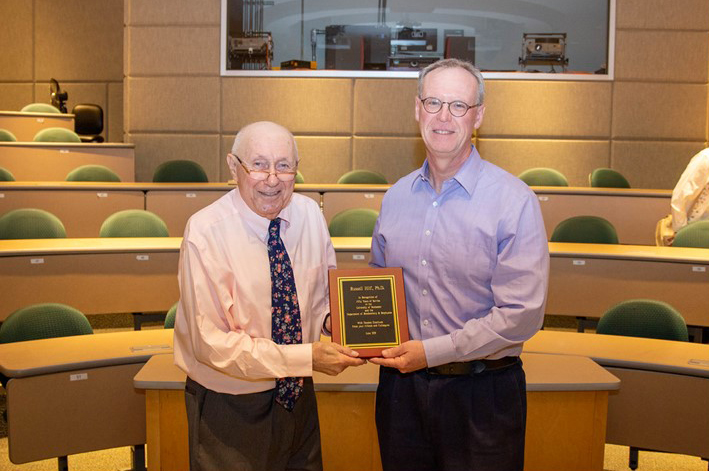
Dr. Hilf receives the commemorative plaque from Jeff Hayes, Chair of the Department of Biochemistry and Biophysics.
Lynne Maquat Interviewed at the RNA Symposium at Cold Spring Harbor Laboratory
Monday, June 17, 2019
Harold Smith Featured on Roc NORML Radio
Wednesday, May 22, 2019
So what exactly happens inside your body when you consume Cannabis? Dr. Smith outlines the powerful role of the Endocannabinoid System in modulating human health, and discusses the future of Cannabis research and testing.
Read More: Harold Smith Featured on Roc NORML RadioCongratulations Dalia Ghoneim for winning a Born Seekers Fellowship
Wednesday, May 8, 2019
The Born Seekers fellowship is a speech contest that is open to women in STEM. The work they do pushes boundaries and meaningfully impacts society on a local, national, and often global level. The women selected as our 2019 Born Seekers build skills in communication and leadership, serving as role models for the next generation of scientists, engineers, doctors, and STEM professionals.
Dalia Ghoneim is a PhD candidate in Genetics at the University of Rochester in Rochester, NY. She develops and contributes to software that helps us understand the structure and functions of genetic molecules, and has worked to analyze mutations in DNA from patients with severe neurological diseases like epilepsy and autism. This work was instrumental to identifying new genes that cause these diseases. Dalia takes as many opportunities as she can to share science with others by participating in outreach and advocating for inclusion in science. Outside of science, Dalia is a single mother to four wonderful children, a competitive runner, and enjoys figure drawing and learning and experiencing new things.
31st Annual Genetics Day Symposium
Monday, April 22, 2019
The Departments of Biomedical Genetics and Biology, with the support of the University Committee for Interdisciplinary Studies, host the 31st annual Genetics Day Symposium on Thursday, April 25, from 9:30 a.m. to 4 p.m. in the Class of '62 Auditorium and Flaum Atrium. This year's Fred Sherman Lecturer will be Phillip Zamore, a Howard Hughes Medical Institute investigator and professor of biomedical sciences at the University of Massachusetts Medical School, giving a talk titled "piRNAs and the Struggle to Reproduce."
Byron Rubin, Ph.D., Adjunct Professor in the Department of Biochemistry and Biophysics, pens article in ASBMB TODAY
Monday, February 18, 2019
Dr. Rubin describes his own battle with prostate cancer, and how as a scientist how he took control of his own treatment. He also describes the impact of personalized medicine on his medical decisions and how he deals with living with cancer. Read the article.
Former Biochemistry Student Jerry Madukwe, Ph.D. travels to West Africa to Speak With Students
Wednesday, January 30, 2019
Jerry Madukwe, Ph.D., who received his Ph.D. in Biochemistry (2018), and is currently a postdoctoral fellow at Yale University, recently completed a 2-week science-outreach trip to West Africa. Jerry was invited by the West Africa Center for Cell Biology of Infectious Pathogens at the University of Ghana, and the Department of Life sciences at the University of Ilorin in central Nigeria to talk about the work he did as a PhD student and about graduate school in the United States. Jerry, who hails from Nigeria, and got his BS from Lee University in Tennessee, also used the opportunity to visit his former elementary school where he talked to fifth grade pupils about science (see photos), and to demonstrate DNA extraction from bananas. The kids were very excited by his visit, and Jerry found the experience very fulfilling.
Chavali, Couch, DeZoysa and Hao Win Sayeeda Zain Travel Award
Tuesday, December 18, 2018
The department is pleased to announce the winners of the Sayeeda Zain Fall Travel awards: Shashank Chavali, Tyler Couch, Meemanage Dudarshika DeZoysa and Fanfan Hao.
The Sayeeda Zain Travel Award honors the distinguished career and charitable life of Dr. Sayeeda Zain. The award is given in recognition of research excellence to support travel and related expenses associated with attendance at a scientific conference or corporate internship to gain practical experience. The next round of Sayeeda Zain Travel Awards will be offered in Spring 2019.
Thank you to all those who applied and congratulations to Shashank, Tyler, Dudarshika and Fanfan!
Professor Harold Smith, Ph.D. appears on Evan Dawson Radio Program
Thursday, November 29, 2018
Harold C. Smith was a guest along with Bob Duffy (CEO of the Greater Rochester Chamber of Commerce), Jason Klimek (attorney with Boylan Code), Zachary Sarkis (co-founder of Flower City Solutions) and Jacob Fox (founder of Closed Loop Systems) on WXXI Connections with Evan Dawson on 11/21/2018 to address the opportunities and questions surround the emerging hemp industry in Up State NY. (listen to Hemp101http://www.wxxinews.org/programs/connections?page=1&ajax=1)
Dr. Smith spoke regarding the future of labeling and dosing of THC-free and THC-containing products relative to what we understanding from scientific and clinical research. Having founded CannaMetrix, LLC, a New York based company, Dr. Smith seeks to establish through patent pending, cell-based assays, to raise the standards for product development and quality control so as to better information patient choices of products containing full spectrum plant cannabinoids or synthetic cannabinoids and advance medicinal use of cannabis.
Wedekind Co-Organizes Nucleic Acids Session at American Crystallographic Association Annual Meeting in Toronto
Friday, November 9, 2018
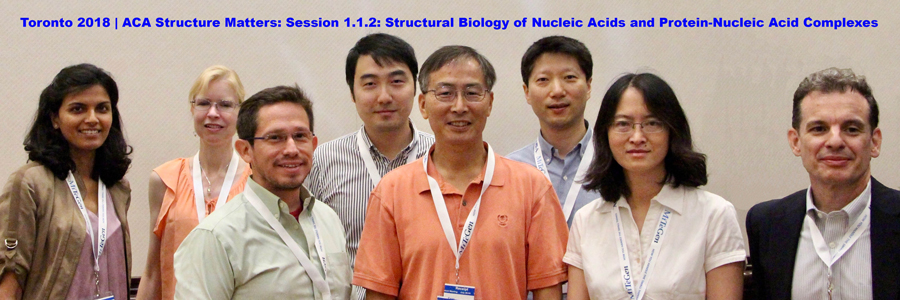
Highlights of Session 1.1.2 on Nucleic Acid were reported in ACA RefleXions Fall 2018 and provided many new insights into the form and function of nucleic acids and was co-organized by Dr. Joseph Wedekind and Dr. Rui Zhao. Dr. Wen Zhang of Harvard University presented mechanistic studies of non-enzymatic RNA polymerization using custom phosphoramidites with imidazole leaving groups that were caught in the act of catalysis by crystallographic snapshots. This work has implications for catalysis in a pre-biotic RNA world. Sun Cheol Park from Kangwon National University, Korea described DNA recognition by the PadR repressor. Binding of phenolic acid blocks DNA binding to relieve PadR repression, activating downstream detoxification genes. Dr. Yun-Xing Wang from NIH/NCI described use of an X-ray free electron laser to capture conformational changes of the adenine riboswitch during effector binding, providing insights into RNA-mediated translational regulation.
Prof. Clara Kielkopf from the University of Rochester described progress to decode the basis of 3´-splice site recognition of pre-mRNA by U2AF proteins, including polypyrimidine tract recognition and binding to degenerate splice-sites. The work has implications for correction of splicing defects found in human diseases. Dr. Eric Montemayor from the University of Wisconsin described later steps of pre-mRNA splicing, including a model for U6 snRNA remodeling by contacts to the Lsm2-8 ring protein and the Prp24 chaperone. Dr. Soumya Remesh from the Lawrence Berkeley National Lab used small angle scattering and soft X-ray tomography to reveal how small molecules interact with the abundant HU protein to alter DNA supercoiling. The work has implications for controlling bacterial gene expression. The session was anchored by Dr. Ailong Ke of Cornell University who presented structural snapshots that contribute a novel mechanistic framework to describe how bacterial type II-A CRISPR systems create new molecular memories of short, foreign 'spacer' DNAs that invade bacterial cells.
Dumont Receives 2018 Outstanding Graduate Student Teacher Award
Tuesday, November 6, 2018
Biochemistry professor Mark Dumont, Ph.D. is the recipient of the 2018 Outstanding Graduate Student Teacher Award. Established in 2013, this award is given to an outstanding graduate student teacher for record of excellence in classroom instruction. Mark was nominated by graduate students Brandon Davis, Ashwin Kumar and Matthew Raymonda.
This award was presented at the School of Medicine and Dentistry Convocation Ceremony, September 6, 2018.
The department would like to extend congratulations to Mark on this well- deserved honor.
Kielkopf Lab Wins Annual Halloween Door Contest
Thursday, November 1, 2018
The department would like to thank all that participated in the BCBP Halloween Door Contest this year!
This year the winner is…
The Kielkopf Lab!!
Tied for second place are the Ermolenko Lab and the Grossfield Lab! Congratulations to everyone – the doors looked awesome!
Maquat Inducted into National Academy of Medicine
Sunday, October 21, 2018
Lynne Maquat, PhD, was inducted into the National Academy of Medicine (NAM) on Saturday October 13th in Washington, DC. Here, she is receiving her diploma and congratulations from Victor Dzau, MD, President of NAM after being introduced by J. Michael McGinnis, MD, the Executive Officer of NAM.
Clara L. Kielkopf, Ph.D. Receives Drug Development Grant From UR Ventures For Research To Cure Myelodysplastic Syndromes
Thursday, October 18, 2018
Myelodysplastic Syndromes (MDS) are a group of diverse bone marrow disorders, in which the bone marrow does not produce enough healthy blood cells. MDS is often referred to as a “bone marrow failure disorder.”
Congratulations, Clara and her lab!
Department of Biochemistry and Biophysics Loans Famous Statue to University of Rochester’s Laboratory of Laser Energetics
Wednesday, October 17, 2018
The Department of Biochemistry and Biophysics has loaned a statue of J. Robert Oppenheimer and Albert Einstein to the Laboratory of Laser Energetics. The sculpture was commissioned by the Department of Radiation Biology and Biophysics (William Neuman and Aser Rothstein co-chairs) in October of 1968 and was crafted by Achille Forgione, a notable Rochester artist. The work was in place by the fall of 1970, originally at the entrance to the OO wing, then moved to the Blair Library (no longer in existence). The statue has been in the back of the Neuman Room for many years. It is now displayed prominently in the LLE lobby. An engraved plate will be placed next to the statue, reading: "Albert Einstein, J. Robert Oppenheimer, Statue commissioned by Dr. William "Bill" Newman, On loan from the University of Rochester's Department of Biochemistry and Biophysics"
For more information on Dr. Neuman and his work please visit our department featured alumni page.
Wedekind Lab Co-Crystal Structure of HIV RNA in complex with a Lab-Evolved Protein on the Cover of Nucleic Acids Research
Tuesday, July 31, 2018

Co-crystal structure of HIV trans-activation response (TAR) RNA (rainbow ribbon) in complex with lab-evolved protein, TBP6.7 (blue Cα ribbon). A short peptide (pink) binds TAR outside the context of TBP6.7. (art by Joseph Wedekind). The underlying electron micrograph shows HIV virions (CDC image #13472 by Maureen Metcalfe and Tom Hodge).
Nucleic Acids Research Breakthrough article describes structure of HIV TAR complex with engineered binding protein and structure-based synthesis of antagonist
Investigators at multiple research institutes, led by Dr. Joseph Wedekind (University of Rochester) have described the high resolution crystal structure of a laboratory-evolved protein bound to its tightly associated HIV TAR RNA target, and subsequent synthesis and characterization of a stapled peptide mimic of the predominant RNA binding epitope in that protein. The study provided a detailed framework for peptide-mediated TAR recognition that might be generally applicable to target other disease-relevant RNAs.
HIV/AIDS is a global health threat that requires new insights into viral targets, especially those that resist mutation and promote novel aspects of the viral life cycle. In these respects, the HIV-1 trans-activation response (TAR) RNA is of ongoing interest. Previously, investigators (including some from this author group) developed methods to produce a unique lab-evolved protein ('TBP6.7') that recognizes TAR with extraordinarily high affinity compared to known TAR binders [Crawford et al. McNaughton (2016) ACS Chem. Biol. 8, 2206]. However, the molecular determinants of TAR recognition remained obscure, thus limiting the investigators' ability to further exploit that discovery. The crystal structure of this complex allowed investigators to determine that only a subset of the 'evolved' protein sequences are actually involved in RNA binding, with the preponderance of interactions localized to a short β-hairpin. This observation led them to synthesize a short, stapled peptide that mimics the β-hairpin and attenuates TAR-dependent transcription in HeLa nuclear lysate.
The study reported here [Belashov et al. Wedekind (2018) Nucleic Acids Res. 46, 6401-6415] is highly multi-disciplinary, spanning crystallography, site-directed mutagenesis, calorimetry, cell-surface display, ELISA, transcription assays, molecular dynamics simulations, and constrained peptide synthesis. In the end, the conversion of the parental RNA binding protein from single- to double-stranded RNA recognition implies that the protein has sufficient plasticity to recognize numerous RNA folds.
Reviewers and editors familiar with the work have stated that the study is "a strong contribution to a difficult field" that "will have substantial impact in the field of RNA recognition, ranging from applied (specifically targeting therapeutically relevant RNAs) to basic (understanding how RRMs bind to specific RNAs in the cell)"
The Wedekind laboratory at the University of Rochester investigates the mechanisms of action of non-protein-coding (nc)RNAs, and is interested especially in the three-dimensional architectures of these RNAs and how they bind to specific small molecules or peptides, leading to conformations that alter biological function. The research was supported by the University of Rochester Center for AIDS Research, and the National Institutes of Health.
Biochemistry & Biophysics Students Going Places
Tuesday, June 12, 2018
By Dr. Joseph Wedekind
The Department of Biochemistry & Biophysics is pleased to announce the winners of the Sayeeda Zain Fall Travel awards: Debapratim Dutta, Sierra Fox and Hong Zhu.
The Sayeeda Zain Travel Award honors the distinguished career and charitable life of Dr. Sayeeda Zain. The award is given in recognition of research excellence to support travel and related expenses associated with attendance at a scientific conference or corporate internship to gain practical experience.
Debapratim (Dave) Dutta is presenting a poster and was invited to give a talk at the Annual RNA Society Meeting (Berkeley, CA). Sierra Fox presented a poster and was a Keystone Symposia Future of Science Fund Scholarship recipient at the Keystone Symposia in Chromatin Architecture and Chromatin Organization, and Gene Control in Development and Disease Symposia (Whistler, BC, Canada). Hong Zhu presented a poster at the III International Conference on Vaccines Research and Development (Washington, DC).

Debapratim (Dave) Dutta

Sierra Fox
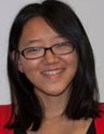
Hong Zhu
Congratulations to the 2018 Biochemistry Graduates!
Tuesday, May 22, 2018
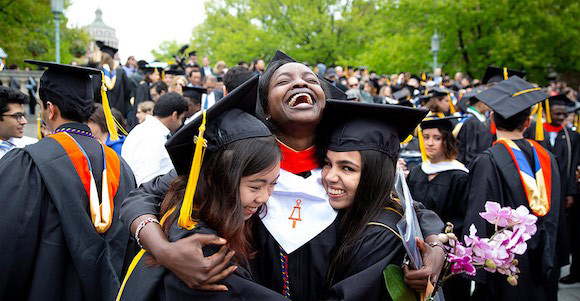
Pictured are Anne Cheng, Venice Magunga, and Anmol Almast following the Arts, Sciences & Engineering commencement ceremony Sunday. Photo reproduced from 5-21-18 issue of @Rochester
The Department of Biochemistry and Biophysics congratulates the 20 young men and women who received their B.S. in Biochemistry this weekend. We look forward to their continued success in their future training and careers! In addition to the University-wide celebration, these graduates received their diplomas at a ceremony in The Class of ’62 Auditorium, attended by their families, friends, and faculty from the many departments involved in their training. The ceremony was officiated by Beth Grayhack, Ph.D., Director of the Undergraduate Program (Biochemistry and Biophysics), and was enriched by addresses from Sina Ghaemmaghami, Ph.D. (Biology) and Mark Dumont (Biochemistry and Biophysics).
Biochemistry and Biophysics Holds Annual Department Awards Ceremony
Sunday, May 20, 2018
On Friday May, 18th the department held it's annual awards ceremony in the Neuman Room. At the event this year the following awards were awarded to our current B&B graduate students:
- Bloor Award - Christina Brule and Lu Han
- Metzger Award - Karl J. P. Smith
- Sherman Award – Bronwyn Lucas
- Neuman Award – Chapin Cavender
- Grossfield Award – Sreyoshi Sur (talk), Lauren Benoodt (poster)
- Student Seminar Award – Fall: Bronwyn Lucas (BMB), Leslie Salas-Estrada (BSCB)
Spring: Viktoriya Anokhina (BMB), Daniel Steiner (BSCB)
- Hooker Award – Dudarshika DeZoysa (BMB), Christina Lai (BMB)
- Goodman Fellowship (3rd place for the Messersmith Award) – Leslie Salas-Estrada
- Faculty Award – Mark Dumont (BMB), Alan Grossfield (BSCB)
- Zain Award – Christine Lai, Lingfeng Luo, Louis Smith
Congratulations to all the winners and our 2018 graduates!
A Hidden Promise in the Language Cells Use to Communicate
Tuesday, May 8, 2018
Scientists have begun to implicate extracellular vesicles and exosomes in everything from cancer to viral infections to basic neural functioning. To Lynne Maquat, the J. Lowell Orbison Distinguished Service Alumni Professor in the Department of Biochemistry and Biophysics, the process shows how parts of the genome we used to think of as junk actually have important functions. “You could say that the host domesticated a viral sequence for its own purposes,” Maquat says. “That’s the beauty of our complexity—[these elements] allow tinkering or fine-tuning of genes.”
Maquat Wins the 2018 FASEB Excellence in Science Award
Sunday, April 22, 2018
Looking to RNA for Answers
Friday, March 23, 2018
Cancer is a group of diseases in which the body's cells divide uncontrollably and invade nearby tissues. Scientists at Wilmot Cancer Institute and the University of Rochester's Center for RNA Biology are working to understand more about how and why this happens.
One piece of the puzzle they're studying is ribonucleic acid, or RNA, which is found in all cells. RNA is made in the nucleus of a cell from our DNA, which holds the instruction manual for life. RNA puts those instructions into action.
RNA comes in many forms. One form, called messenger RNA (mRNA), carries those instructions out of the nucleus to the ribosomes, where proteins are made. These proteins are essential for functions ranging from digestion to protecting us from disease. If the mRNA has a bad copy of instructions, then either a faulty protein or no protein is created, leading to diseases like cancer.
Understanding the quality-control system
Lynne E. Maquat, Ph.D., director of the Center for RNA Biology, studies a quality control process that blocks cells from making faulty proteins. Called nonsense-mediated mRNA decay (NMD), this process comes into play when mRNA has a set of instructions with a mistake that will lead to short or incomplete proteins. NMD acts like a set of factory inspectors that find and destroy this mRNA before the faulty proteins can be made.
Sometimes, though, NMD doesn't catch the mistakes and harmful proteins are made. This process plays a part in one-third of all inherited diseases, such as cystic fibrosis and muscular dystrophy, and one-third of all acquired diseases, including a number of cancers.
One reason is that tumors can influence how these inspectors work. Maquat and her team are looking for ways to stop tumors from interfering with NMD with the goal of finding new ways to treat cancer.
Slowing cancer's growth
A team from Maquat's lab has also identified a protein called Tudor-SN that is important as cells prepare to divide. This protein controls many microRNAs, molecules that are very small RNAs that control the expression of tens of thousands of genes.
The scientists found that when Tudor-SN is removed from human cells, levels of hundreds of microRNAs go up, putting the brakes on genes that encourage cell growth. This slows down the process of cell division known as the cell cycle, which goes awry in cancer.
Maquat and Reyad A. Elbarbary, Ph.D., a former post-doctoral fellow in Maquat's lab, have filed a patent application for methods that target Tudor-SN for the treatment and prevention of cancer. They continue to study how Tudor-SN works in concert with other molecules and proteins so that scientists can identify the most appropriate drugs to target it.
Other avenues
Scientists at the Center for RNA Biology are also looking at RNA's other roles in cancer to find new treatment strategies. For example, Mitchell O'Connell, Ph.D., is studying how microRNAs can interfere with the way genes are expressed and lead to cancer. He and his team are using the gene-editing technology known as CRISPR, which he has adapted to edit RNA, to learn more about the proteins involved in this process.
Yi-Tao Yu, Ph.D., and his team are studying various ways to modify mRNA so that it can override mistakes in genetic instructions. Sometimes there's a premature stop signal that orders a cell to stop reading the genetic instructions in mRNA partway through the process, resulting in an incomplete protein. The Yu lab is working to alter mRNA in ways that turn "stop" signals into "go" signals, creating full length proteins and preventing diseases like cancer.
The study of RNA biology is allowing scientists and physicians to explore entirely new treatment strategies for cancer and a wide range of other genetic and acquired disorders.
Learn more about the work being done at the Center for RNA Biology.
By Lydia Fernandez
Maquat Wins 17th Annual Wiley Prize in Biomedical Sciences
Tuesday, February 20, 2018
The Wiley Foundation today announced the 17th annual Wiley Prize in Biomedical Sciences will be awarded to Lynne E. Maquat for elucidating the mechanism of nonsense-mediated messenger RNA decay, a fundamental process whereby cells remove defective transcripts that can encode toxic proteins.
Dr. Maquat is a Professor at the Department of Biochemistry & Biophysics in the School of Medicine and Dentistry, the Founding Director of the Center for RNA Biology: From Genome to Therapeutics, the Founding Chair of the University of Rochester Graduate Women in Science, and the J. Lowell Orbison Endowed Chair at the University of Rochester in Rochester, New York.
"The 2018 Wiley Prize honors Dr. Maquat, whose work illuminated how our cells prevent production of toxic proteins by removing defective messenger RNAs," said Dr. Titia de Lange, chairperson of the awards jury for the Wiley Prize at the Rockefeller University in New York City.
"The Wiley Foundation honors research that champions novel approaches and challenges accepted thinking in the biomedical sciences. The work of the 2018 Wiley Prize recipient Lynne Maquat truly upholds this mission," said Deborah Wiley, Chair of the Wiley Foundation. "We are pleased to highlight the impact that her research on messenger RNA decay pathways has had in advancing our knowledge of the cellular cause of many human diseases."
Dutta, Fox, and Zhu Win Sayeeda Zain Travel Award
Tuesday, January 2, 2018
The department is pleased to announce the winners of the Sayeeda Zain Fall Travel awards: Debapratim Dutta, Sierra
Fox and Hong Zhu.
The Sayeeda Zain Travel Award honors the distinguished career and charitable life of Dr. Sayeeda Zain. The award is
given in recognition of research excellence to support travel and related expenses associated with attendance at a
scientific conference or corporate internship to gain practical experience. The next round of Sayeeda Zain Travel
Awards will be offered in Spring 2018.
Thank you to all those who applied and congratulations to Dave, Sierra and Hong!